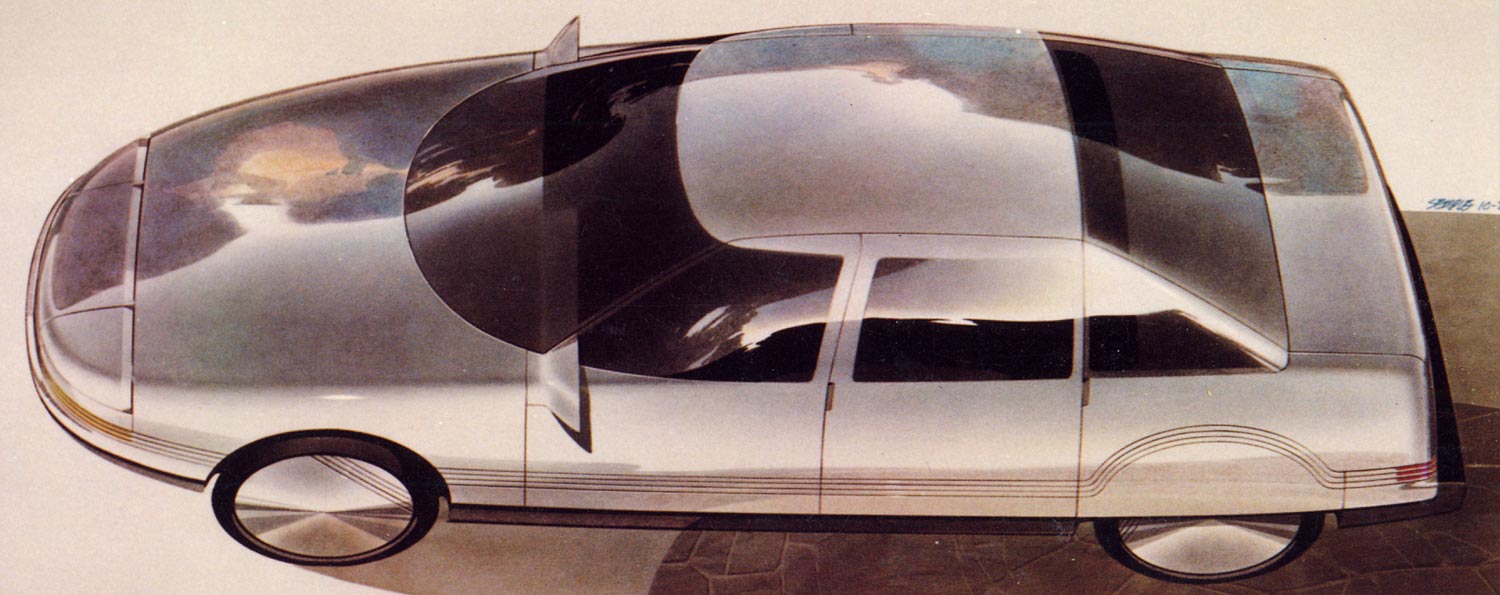
NDI-Nissan Design International
Published in Car Styling, Issue 60, September 1989
Located in San Diego, the activities of Nissan Motor’s design development organization, Nissan Design International Inc. (NDI), are currently attracting attention. With the publication of the fact that NDI contributed to the design development of the Pathfinder (Terrano) multi-purpose vehicle and the Pulsar series, local press and mass media have been extremely favorable in their coverage of the design laboratory. CAR STYLING has been planning to do a special feature on NDI since its inauguration and, with the cooperation of the Nissan head office and NDI, has at last managed to put together the following report on the whole organization.
Reason for Establishment
The decision to establish NDI was made in April, 1979. The objective was described as follows: ‘It was decided to establish a creative design facility in America, which enjoys a favorable position in terms of international design, and for this facility to harmonize its activities with those of the Nissan head office and contribute to improving the company’s product development, placing primary important on the presentation of designs with a different feeling to them than those produced internally in Japan. This to be in addition to doing advanced work on car design for the future.”
Towards this end it was deemed necessary to build up, by means of the development of innovative design concepts and ideas, and a long-term perspective, a firm relationship which would encourage a synergetic effect with the Nissan head office design organization. What was being sought was a team of highly capable people, and a relatively small but efficient organization. And in the selection of personnel more importance was to be placed on people with the disposition to be ‘partners’ willing to tackle ambitiously creative design work in the context of a new kind of international relationship, rather than those who would fit in with the existing organization.
The History
The decision to establish the new organization was made by Shun Ishihara, Nissan president during the latter half of the 1970s when the company was pushing forward an aggressive overseas strategy. General manager of the Styling Department at the time, Kazumi Yotsumoto, was put in charge of the special project, and Shigeru Nagata, manager of administration, the Styling Department at the time, was selected as Yotsumoto’s assistant. Candidates for a location for the new organization included New Jersey, Detroit, and the middle of the desert, and the West Coast. (Europe was also considered before the decision was made to locate it in America.) Eventually South California was chosen as the primary candidate, because of its favorable geographical relationship with Japan, to presence of Nissan Motor Corporation in U.S.A., and to its climate and natural features.
At first, a site somewhere on the coast near Ventura, close to Santa Barbara, north Los Angeles was considered. On the advice of a certain person, however, a study of the suitability of San Diego was made, and discovering the superb environment offered by La Jolla, both Yotsumoto and Nagata were convinced “this was the only place.” President Ishihara gave his approval, and in July, 1980 a temporary studio was inaugurated. Around this time, negotiations on the recruitment of a talented staff were already in progress, and in October, 1979 L. Shoemaker joined the company. Senior Executive of Unocal, he had worked in the chemical division for 11 years, and much was expected of his managerial abilities. In February, 1980, G. Hirshberg joined the team after leaving his position as Chief Designer of the Buick Studio at General Motors. Accompanying him from GM were Al Flowers, his subordinate in the Buick Studio, and Tom Semple from the Chevrolet Studio. The initial NDI team was complete, and design work started right away. At the time, NDI got by as far as the model making was concerned by commissioning Tesa, a design consultant company, with the work. The new company building was completed in February 1982. The original architectural plans were done by a Japanese construction company, but the boxy shape did not blend into the La Jolla locale. In the end, NDI gained Nissan head office’s approval for a modern and distinctive design produced by K. Roncetti, a friend of Semple’s from his Art Center days.
NDI’s Role
The role sought of NDI by Nissan head office is outlined as follows. “There will be cases where design development proposals presented by NDI will be approved in-toto while, at other times, design development will be conducted by both NDI and NTC working in parallel. Whichever the case, design development will be planned and executed by the Nissan Styling Department along the lines of the planning concept determined by the Product Planning & Marketing group in terms of the aims, and main markets for the product.
“At present, NTC is engaged in the development of strategic designs based on plans drawn up and adjusted by the Product Division, and it is grappling with the theme of how to best match, from the design aspect, the company’s different products and product groups. NDI should function within the context of this major theme, the actual design development to be undertaken by NDI being determined from this viewpoint.
“The fact that the Nissan Styling Department is recently being viewed with such importance is due to the so-called ‘front-loading’ approach in which, on the basis of strategic design planning, the advanced stage is fortified as far as possible by keeping personnel in a state of flow. This realizes a better matching of model series, and ties in toa design output with a more clearly defined aim.
“This is the principal role of the No. 1 Studio at NTC, and NDI’s role in the future will require even closer ties with the No. 1 Studio than in the past.
“NTC will remain responsible for tying design development into production. This makes the close cooperative footing based on a relationship of trust between NDI and the head office Development Division and Styling Department a compulsory condition. The fact that they have produced excellent results together and share much experience to date is a major point in their favor.
Optimal Environment
Nissan Design International’s building was built to blend in with the beautiful natural environment of the hilly district in the northern part of the port city of San Diego, situated in the south-western extremity of California. Close by is the well-known seaside resort of La Jolla, and home to the San Diego campus of University of California San Diego had developed in recent years into quite a university city. It lies approximately 200 km south of Los Angeles, with the Mexican border just south of it. Known for having the largest naval port on the Pacific coast, San Diego is today transforming itself into a city of research and university facilities. The city itself is devoting considerable effort and energy to cultural aspects.
Formerly a Spanish possession, San Diego has many exotic sounding place names and famous sights, and the Balboa Park and Old Town are always full of sight seers. The whole atmosphere is very different from that found in north east America, and even compared with the megapolis Los Angeles, San Diego offers a far more favorable environment. In recent years there has apparently been a considerable influx of highly educated and intellectual people.
The city authorities are also working actively to elevate San Diego’s image as a city of culture, and as well as providing environmental protection, are also devoting considerable energy to redeveloping the down-town and port areas.
While other Japanese auto companies have located their design headquarters in Newport Beach, Irving and other places relatively close to Los Angeles, | feel that having visited the place | can now see why NDI decided to locate itself far away in San Diego.
Attractive Building
The NDI building is located at 9800 Campus Point Drive, a quiet spot with good access just off the main road, Genesee Avenue. The spacious, single-story building occupies 43,000 ft. and is located on 6.5 acres of land. Toyota’s Calty building, incidentally, at 28,098 ft. on a 4.4 acre site was originally thought to be very spacious, but the NDI building is much more modern looking and on a larger scale altogether. Total construction cost was approximately $4.7 million, a considerable investment.
The building with its highly functional and stimulating layout is not a simple square box, but presents a very distinctive and attractive appearance in which half of the main building employs a diamond shaped plane. Matched to the expansive views, the landscaping is superb. Maintenance is thorough, and all in all the complex extends a warm welcoming feeling to those who visit it. There are no imposing gates, nor is there any gatekeeper. Looking onto the spacious car park, the blasted concrete facade has a natural and soft look (the dry climate means the concrete suffers little environmental damage,) while the contrast created with the black pane glass delineates a wonderfully acute silhouette against the clear blue sky and strong sunlight. Black pane and mirror coating glass not only prevent people outside from being able to see in, in Southern California with its very strong sun they offer considerable benefits in terms of light regulation and air conditioning and are used in most office buildings.
On the garden side of the lobby-administration area water cascades through a western “moat.” Reflecting the sky and buildings on its surface, it looks invitingly cool. This very tasteful and striking appeal to the emotions is sure to strike an empathetic chord in Japanese hearts.
Functional Layout
The layout consists basically of the main building, and the support unit. The main building is divided into the administrative section which steps up from the lobby, and the work area which contains the three studios. In the administrative area, the executive offices and conference rooms lie to the left and right; all have glass walls and so one can see at a glance whether someone is in his office or not. The support unit houses a library, refectory and kitchen, as well as the modeling shops, painting shop, machining room and shower room. Access to the studios and modeling shops is restricted by automatic doors operated by means of a combination number.
Between the two buildings lies a delightful central court, designed to prevent the noise and the smell of resin from | the modeling shops from directly affecting the studios, Being a region which gets little rain, the design is moderately open to the sky.
Two studios/presentation rooms are presently in use | and are known as the Red and the Blue studios. The color appellation was chosen, apparently, because the staff felt it better to avoid ‘ranking’ them with letters or numbers. The studios each face onto their own outdoor viewing | court, equipped with turntables. When looking at the viewing courts and gardens through the black pane wind from inside the studios, there is a reassuring integral look | about everything, while at the same time it produces a wonderful sense of openness. The approach adopted here is the same as that for the studios in the Nissan Technical Center in Atsugi, Japan. The studios have a room for the chief designer, while individual designers booths are divided by low mobile partitions. Behind the building housing the studios is a tennis court, which could probably be converted into either a viewing room or studio if required. The tennis court is open to staff family after 4.00 pm. The machining rooms are also opens to the staff after working hours and at weekends—putting the facilities to best use in this way being an advantage a company with only a small number of employees can enjoy. NDI does have a 3-dimensional automatic drafter, but its policy of producing work with a human touch appears to be making it shy away from computerizing too much of the design work. This reflects the wishes of Director of Design G. Hirshberg and the policy of the Nissan staff.
Nature Always Visible from Inside
In terms of presenting a pleasant atmosphere, the interior certainly holds its own against the exterior. At the same time as looking very much like a design house and being stimulating, there is nothing cold or confined about the interior. It encloses a relaxingly composed and comfortable space. There are no curtains or blinds to cut off one’s field of view, and the green vegetation visible through the black window panes looks refreshingly vivid, giving the impression one could converse with the natural scenery.
All furniture, fittings and fixtures are standardized in a semi-matte black finish, complementing the black pane glass as seen from the outside. The carpets, seat cloth and other textiles are all in a dignified rose tone, and give a peaceful, relaxing look to the interior.
In the administration hall, the secretary team occupies a central area underneath the skylight, and through the glass walls this is visually linked to the surrounding offices. The secretarial area is surrounded by the offices of the president, vice president (design director), assistant manager, liaison engineer, administration manager, as well as the reception and conference rooms, and the A/V project conference room. The corridor/gallery leading away from the entrance hall takes one to the support unit. The fully equipped kitchen has a large refrigerator and micro-wave cooker and ovens making it very simple to ‘‘cook” a frozen pizza, or whatever. As well as keeping foodstuffs and drinks cool, the refrigerator also has the important function of preserving photo-sensitive materials at low temperatures. The library, which is adjacent to the refectory, is well stocked with specialist design magazines, and books on automobiles. There were also several magazines from Japan. The library and refectory serve as places of social communication for those working in the building.
The NDI building is striking in appearance, even among the many laboratories and office buildings in San Diego. Its quality as a piece of architecture is sufficiently high, and it contributes to the overall scenery of the Campus Point Drive neighborhood. As a matter of fact, Nissan has made the buildings and the gardens available on several occasions for the staging of local community events, and this has helped to enhance the corporate image further. Vice President Hirshberg is a member of the San Diego future planning executive committee, as well as being a director of the La Jolla Modern Art Gallery.
Organization and Running
The way NDI is run differs considerably from design organizations in other Japanese companies in America. Like Calty Inc., NDI is an overseas affiliated firm, but all the actual design work is put entirely into the hands of the people employed locally. The man who conducts design operations is Director of Design Gerald Hirshberg. The total staff numbers 25; 14 to 15 of these being engaged in actual design work. It is very much a small crack unit, a brain tank. Three members of the staff have been sent out from the Nissan head office in Japan; the president and secretary treasurer coordinate management of operations, including general affairs and the accounting side, with the head office. The liaison engineer acts as a pipeline with NTC in technical matters.
NDI’s first president was Kazumi Yotsumoto (presently managing director at Marui Industrial Co.,) and he was the man who was responsible for setting up the company and getting construction of the new building and the day-to-day management of the company on track. Taking up his post in 1986, the NDI president today is Hidehiro lizuka, formerly general manager of the No. 2 Studio, Styling Department. Coming to NDI in January this year, Kengo Ishida is the third man to hold the post of secretary treasurer. A designer by profession, Ishida was responsible for putting together the interior design for the Exa. The first secretary treasurer was Shigeru Nagata, who assisted the first president Kazumi Yotsumoto in getting NDI up and running. He was succeeded in 1984 by Yasuhiko Honma. Liaison engineer Shingo Yamada was sent out to NDI in September, 1984. With these three acting as a pipeline, NDI’s role is to function effectively while harmonizing with the entire NTC styling department. Projects are normally advanced along the lines of a program drawn up by the product planning & marketing group, product & marketing strategy office, and styling department at Nissan, Japan. However, NDI is left to work on some projects on its own, and it sometimes even initiates its own projects.
NDI is an independent affiliate, but its operating budget comes from the Technical Planning Department and Overseas Operations Department in the Nissan head office, so in effect, Nissan buys the results of NDI’s work.
The People at NDI
Leaving the individual profiles to another page, we will take a look here at the kind of work the NDI development staff is engaged in.
Gerald Hirshberg, a leading member from the start of the company, was scouted for NDI by a certain head-hunting Organization in America. He met Nissan’s representative Kazumi Yotsumoto and as a result of their talks it was decided that he should be given the opportunity not simply to assist in the styling development of Nissan models, but to incorporate into the company’s production models designs based on his own philosophy, also that the staff required would be chosen so as to facilitate his task of putting together a team, and further that he would participate in choosing the site for the studios, and in the architectural planning. When Nissan President Shun Ishihara said to him, ‘‘Don’t worry about the relationship with the head office; | want you to introduce a new approach,’’ Hirshberg made up his mind to respond positively to the trust and confidence shown in him.
There can be no doubt that Hirshberg needed considerable motivation to take the decision to leave his important position as Buick Studio Chief and to give up any dreams he had about his future within General Motors, the world’s largest motor manufacturer.
“l am not a believer in advanced design,’ says Hirshberg. “It is a form of escapism; no More than an unrealistic exhibition. Design work is always accompanied by a number of conditions and requirements, and it is only natural that one should have to confront the strict reality they present. The satisfaction comes from taking on this challenge and achieving the objective. This is why an integrated design work process—starting with the concept establishment, working through the ideas and arriving at the production vehicle—is so important. And this is why we must be able to chip in, in an unfettered way, highly creative opinions and different ways of thinking, to create a work rhythm amidst such an approach, and to sublimate creative energy into the product.
“At present we have six principal designers and in what we call the ‘Megagroup concept’ everyone chips in pieces of wisdom. It’s just the same as a six-man crew pulling together in a row-boat. Other companies in America have what is known as the ‘job status system’ which divides people into those who make the decisions and those who execute them. But here at NDI, |, director of design, myself and the studio managers all do our share of design work and contribute ideas. At our study meetings, the administration personnel join in and everyone engages in very frank and outspoken discussions. We may be few in number, but as far as putting creativity to work is concerned, the whole staff is a united body, burning with enthusiasm.”’
Hirshberg goes on to say, ‘’| am convinced that an effective method exists making it possible to bring Japanese and American designers together for a particular project. There has to be an opportunity for sharing visions and concepts without spoiling the rhythm of the methodology, interaction or the design process. I’m certain that this is better than the method employed to date whereby a concept is first established, then sent to Japan where it is modified by Japanese designers to suit the Japanese market. We always keep an open mind about developing a process which will produce designs of a consistently high standard, and are very keen to find ways of cooperating and working with our colleagues at NTC.”
There is in what Hirshberg says something which makes one aware of the difficulties involved when people of different nationalities and languages work towards a common objective. One can also image the conflicts which arise from the differences in their relative positions: parent company and subsidiary; buyer and seller of the design. And it is only natural that the more zealous each side is about the work, the harder it becomes to arrive at a simple compromise. According to NDI President H. lizuka and his assistant Kengo Ishida, Hirshberg is a brilliant director, displays great leadership, and works very hard to secure head office’s understanding.
Red Studio Chief Designer Tom Semple was a top-class designer with General Motors. His technique for idea expression borders on the genius, and he displays this to the full at NDI. While not quite as eloquent as Hirshberg, his talent and sincere personality make him much liked among the young staff, and one gets the impression he goes about his work in a more relaxed way than anyone.
Working in the Red Studio is NDI’s only female designer, Ms. Diana Taraskavage. This is her third year with NDI having joined the company right after graduating from CCS in Detroit. When asked what she thought about NDI, Diana replied, ‘I’m very proud to have been chosen from among so many applicants for the job.’’ She also appears to be very satisfied with the NDI location, its facilities, and her colleagues. Not believing that a designer’s work is confined to sketching, she recently designed and made up some interior trim and a spare wheel cover on an industrial sewing machine she had NDI purchase for her use. Her ambition bubbles through when she says, “Being a small organization, I’m very happy to be allowed to work on both exterior and interior design.”
Al Flowers, Blue Studio Chief Designer, also came to NDI from GM where he was Assistant Chief Designer in Buick Studio, and he too has a charisma, both as a designer and in terms of his personality. While Tom Semple’s work tends towards the emotive, Flowers’ designs are much closer to the Bauhaus concept. Hirshberg lies somewhere between these two, thereby completing what is an extremely well-balanced and successful ‘formation.’ Working in Flowers’ studio is Doug Wilson, the man who designed the canopy on the Exa (Pulsar NX). Wilson used to work for Chrysler, and he finds the very liberal atmosphere at NDI much to his liking. ‘‘There is no greater joy than to see one’s efforts appear in the product unchanged. And because of the large number of model variations in the Nissan lineup, the work is very interesting, ’’ Wilson remarks.
In the same group as Wilson is Bruce Campbell, a designer who used to work for Tesa Design. Tesa had received an order to build a model before the NDI studios were completed and so when invited to join the company, “’It was so natural for me to become a member of the crew,’ he recalls.
Chief Sculptor Alvin Holgerson says, ‘‘NDI is for me the ideal environment,” and Victor Kazakevich, another sculptor, says, ‘I’m very satisfied with things at present. It’s a smal! outfit, but the work is worthwhile and gratifying.”
Arthur Markiewicz is a sculptor who worked for two and a half years with Calty Research Inc before joining NDI. The photography which he started as a hobby, he now puts to useful purpose in recording the work done at NDI. Photography is also a hobby for Design Secretary Marsha Portugal, and all the photographs taken at NDI (including color film, of course) are processed by these two in the NDI laboratory.
On the very first day of our visit to NDI, right before our eyes someone was thrown into the pond. It was Chief Engineer Joseph Mrozowski. What had happened was that two trophies commending NDI’s prowess in technological innovation had just been delivered and to celebrate the event Mrozowski, the personal responsible, had been subjected to the traditional ‘pond ducking.’
The two accolades in question were the ‘Design Innovation’ and the ‘Excellence Through Innovation’ awards. The former was for the concept and development of a light bar/brush guard/bumper package developed for a light truck and was presented by the SPI (Society of Plastic Industries.) The latter was for the creative and active use of engineering structural shapes, and was presented by General Electric.
In all, NDI has been awarded 16 trophies and when the Pulsar series was chosen as the Japanese Car of the Year, practically the whole staff got a ducking! Studio Engineer Mark Varah relates, “At the company | was in before (GM,) | would be plodding away on the same job for six months, but here I’m allowed to get on with a variety of work in a creative way, and being able to take part in the design process; it’s all very satisfying.” “You get a great kick when your own work is recognized and accepted by people out there,’’ says Jeffery Fusoo who is in charge of computers and the automated drafting equipment.
In charge of model engineering are John Toom, and Stephen Ball. Both have worked for Magee-Bralla, and are aerodynamics specialists.
What came through in our interviews with NDI staff is that they all have a strongly professional attitude, and at the same time work very well together as a team. In a rather mischievous turn, we put a few rather dumb questions to the staff including, ‘‘Do you really think NDI is a great company to work for?” and ‘‘Don’t you have any complaints?’’ These are the kind of answers we got:
“NDI is neither San Diego nor California; it’s NDI. It’s just like a small jazz band. There’s no conductor, but the leader plays with everyone. Mr. Yotsumoto and Hirshberg have run the company that way since the beginning.”
‘We want to preserve the liberal atmosphere we have here; keep it going. When someone has an idea, no matter who it may be, he or she can give expression to it using tape or clay, or whatever.” ‘
‘What gives us more pleasure than anything is the fact that cars designed here are actually driving around on the streets. It makes me excited every time | see one.”
As a matter of fact, NDI has announced more designs than any other Japanese satellite design studio. The NX-21 exhibited at the Tokyo Motor Show in the fall of 1983 was the first and has been followed by a small truck, the Terrano (Pathfinder,) the Fairlady Z (Nissan 300ZX,) and the Exa (Pulsar NX).
Japan and America are today scratching their heads about what to do about the inequality in the balance of payments which exists between their countries. But with Japanese companies building production facilities in America, and joint projects between Japanese and American enterprises, private industry on both sides of the Pacific is actively pushing forward measures which will help in breaking out of the present situation.
Nissan Motors international strategy has been reactivated, and it looks as if NDI will come to play an even more active role in the future. There will almost certainly be a further strengthening in the cooperative footing between NDI,
NTC in Japan, and the Europe Liaison Studio, with more and more personnel interchanges. Against such a backdrop, NDI will play an increasing role as a vital think-tank in the Nissan group—something we are looking forward to.
People at NDI
Hidehiro lizuka, President
He previously served as General Manager of the Styling Dept., Studio No. 3, of Nissan Motor Company, Ltd. Japan, and was appointed to the position at President of NDI, in January 1986. He was born January 2, 1934 in Tokyo. He graduated from Chiba University, Industrial Design Dept., in 1956 and was hired by Nissan the same year. He also studied industrial design at the Illinois Institute of Technology from 1962 to 1963.
Gerald P. Hirshberg, Vice President
He was hired February 4, 1980 by Nissan Motor Co., Ltd., previously was a key Executive Designer for General Motors Corporations, Mr. Hirshberg was born July 1, 1939 in Cleveland, Ohio and studied mechanical engineering at Ohio State University, graduating with honors in Industrial Design from the Cleveland Institute of Art. He received the prestigious Mary C. Institute of Art. He received the prestigious Mary C. Page Fellowship upon graduation and studied and traveled extensively in Europe.
Kengo Ishida, Secretary/Treasurer
He previously served as Manager of Interior Design Studio for Nissan Motor Company, Ltd. He was born October 8, 1940 in Tokyo. He graduated from Chiba University in 1963 and was hired by Nissan the same year. He also studied at Center of Creative Studies in 1972.
Allan L. Flowers, Chief Designer
He joined NDI on February 25, 1980. Previously he was Assistant Chief Designer for Buick Studio, General Motors Corporation. Mr. Flowers was born December 27, 1941 in Fort Wayne, Indiana. He graduated, with honors, from the Illinois Institute of Technology.
Thomas H. Semple, Chief Designer
He joined on February 25, 1980 as Chief Designer. Previously he was Assistant Chief Designer for both Chevrolet and Oldsmobile Studios at GM. He was born August 5, 1944 in Medford, Oregon and graduated from Art Center College.
Louis F. Shoemaker, Manager of Administration
He joined NDI on October 8, 1979. Previously he was employed by Unocal as a Senior Executive in their chemical division for over 11 years. He was born November 30, 1942 in Monterey, Calif. He holds both a Bachelor and Master of Art degree in Economics.
Joseph E. Mrozowski, Studio Chief Engineer
He joined NDI on December 16, 1980. Previously he worked for Chrysler Corporation for 11 years as a Senior Studio Engineer. He was born February 27, 1937 in Dearborn, Michigan, and graduated from the Ford Automotive Body Design School in 1961.
Larry E. Brinker, Senior Chief Sculptor
He joined NDI on April 8, 1980. He previously worked for GM as a Design Sculptor for 12 years. He was born December 31, 1941 in Marion, Indiana. He received a Bachelor of Arts degree from the John Herron Art Institute in Indianapolis.
© DeansGarage.com, 2009–2022. Unauthorized use and/or duplication of this material without express and written permission from this site’s author and/or the original copyright owner(s) is strictly prohibited. Excerpts and links may be used, provided that full and clear credit is given to DeansGarage.com with appropriate and specific direction to the original content.
I visited NDI several times after hours with Larry Brinker in the early ’80s, and again in June, 2000 when Larry and I presented the Bugatti model to Ron Kellogg. The last photo in this group was taken in La Jolla near NDI’s temporary studios. Pictured are Gerry Hirschberg, Allan Flowers, Larry Brinker, and myself. I think Tom Semple was also with us.

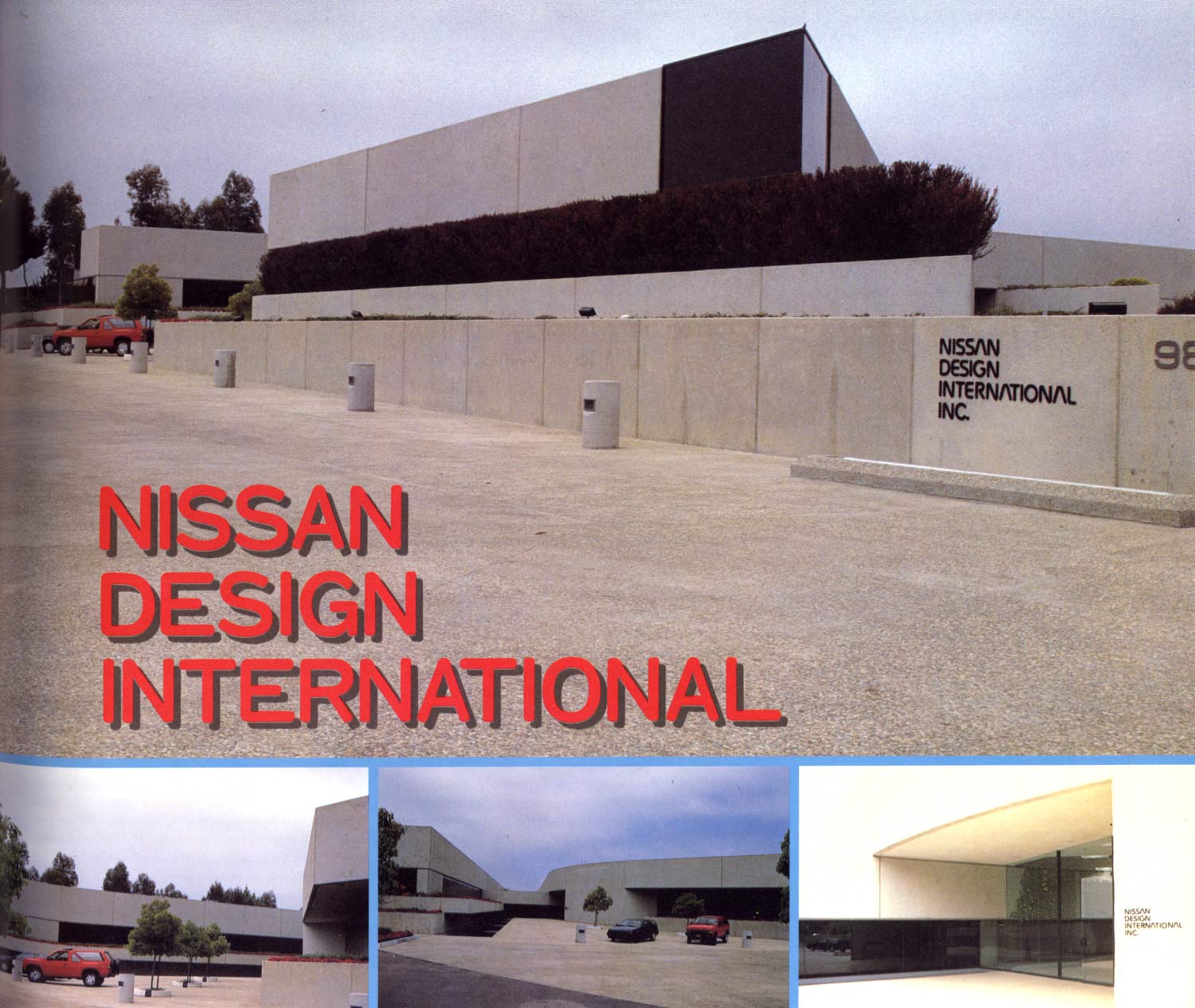
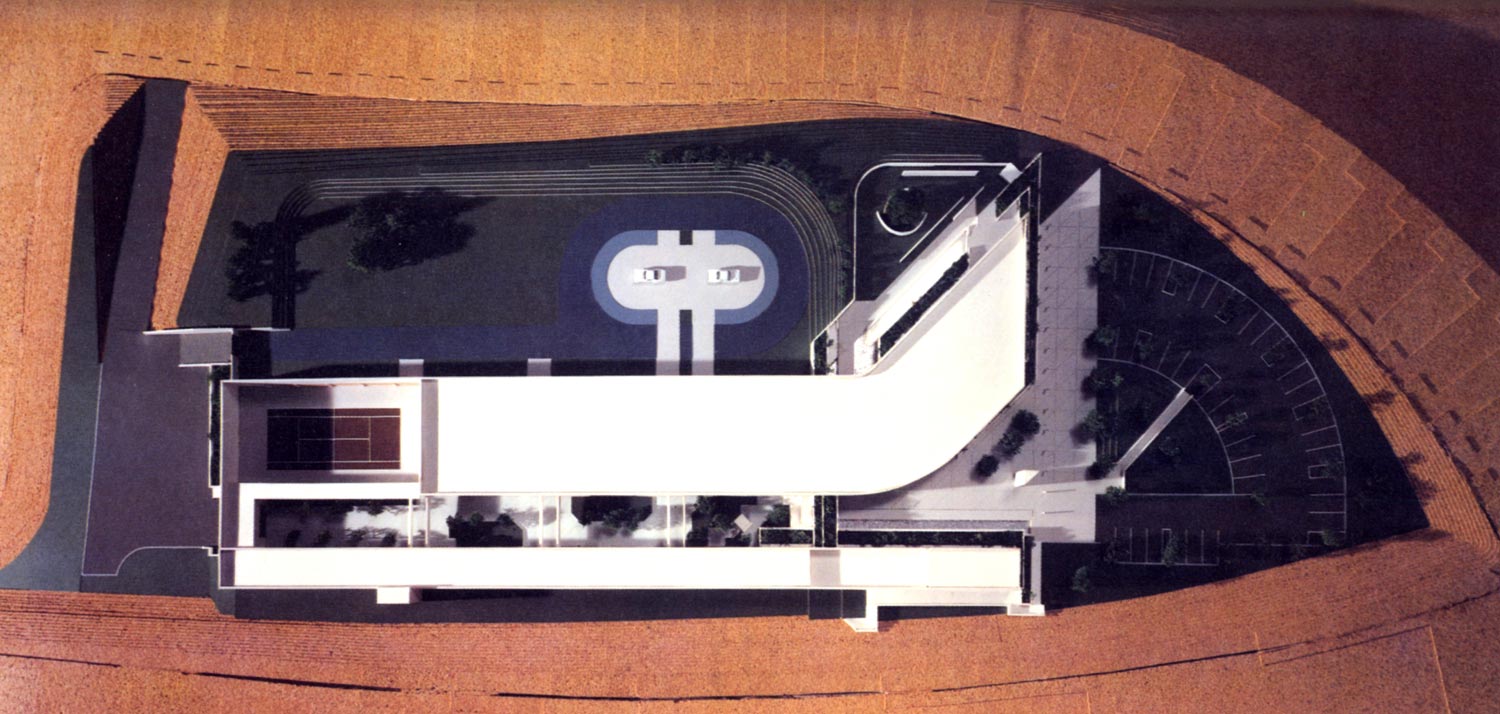
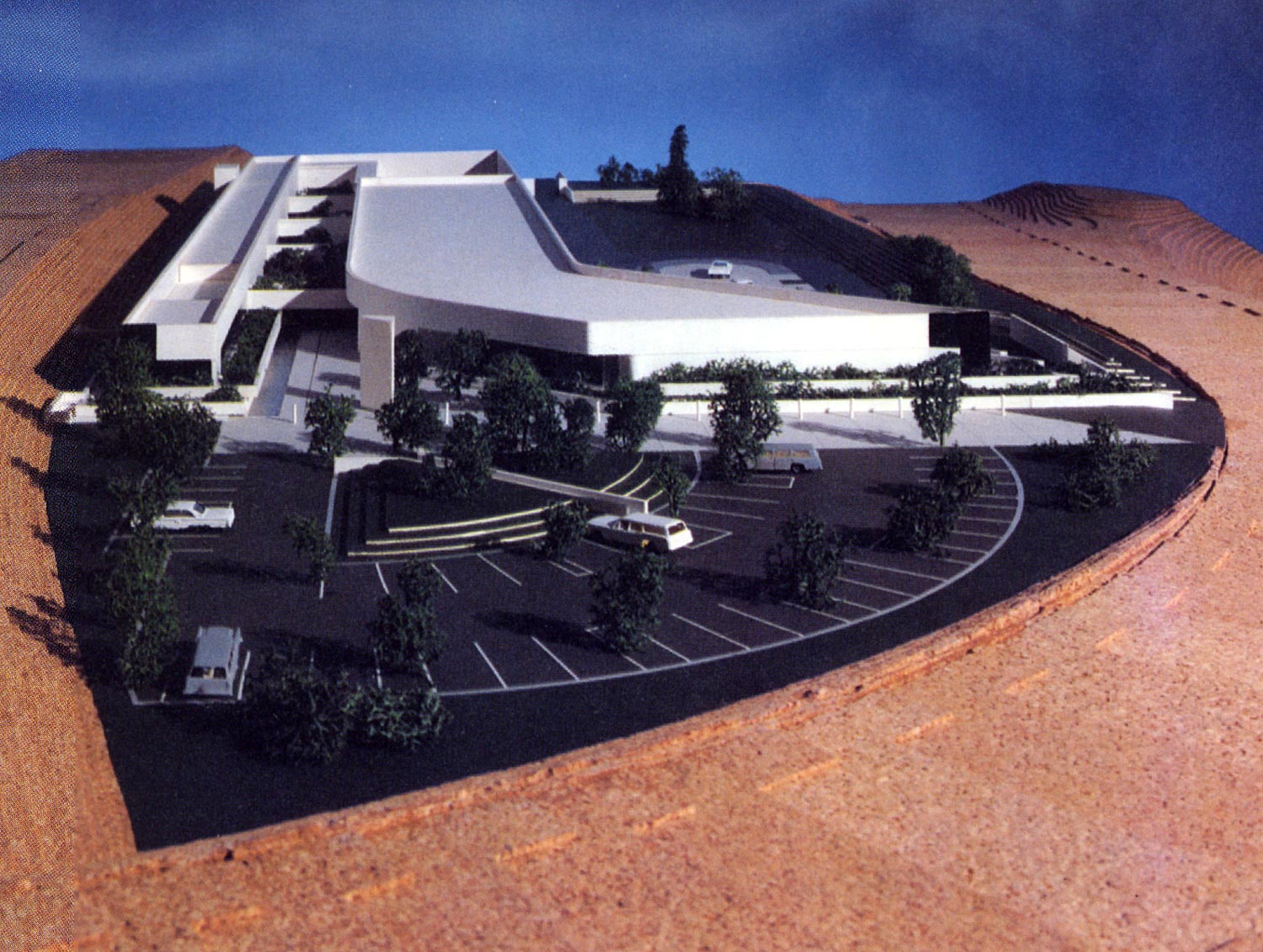
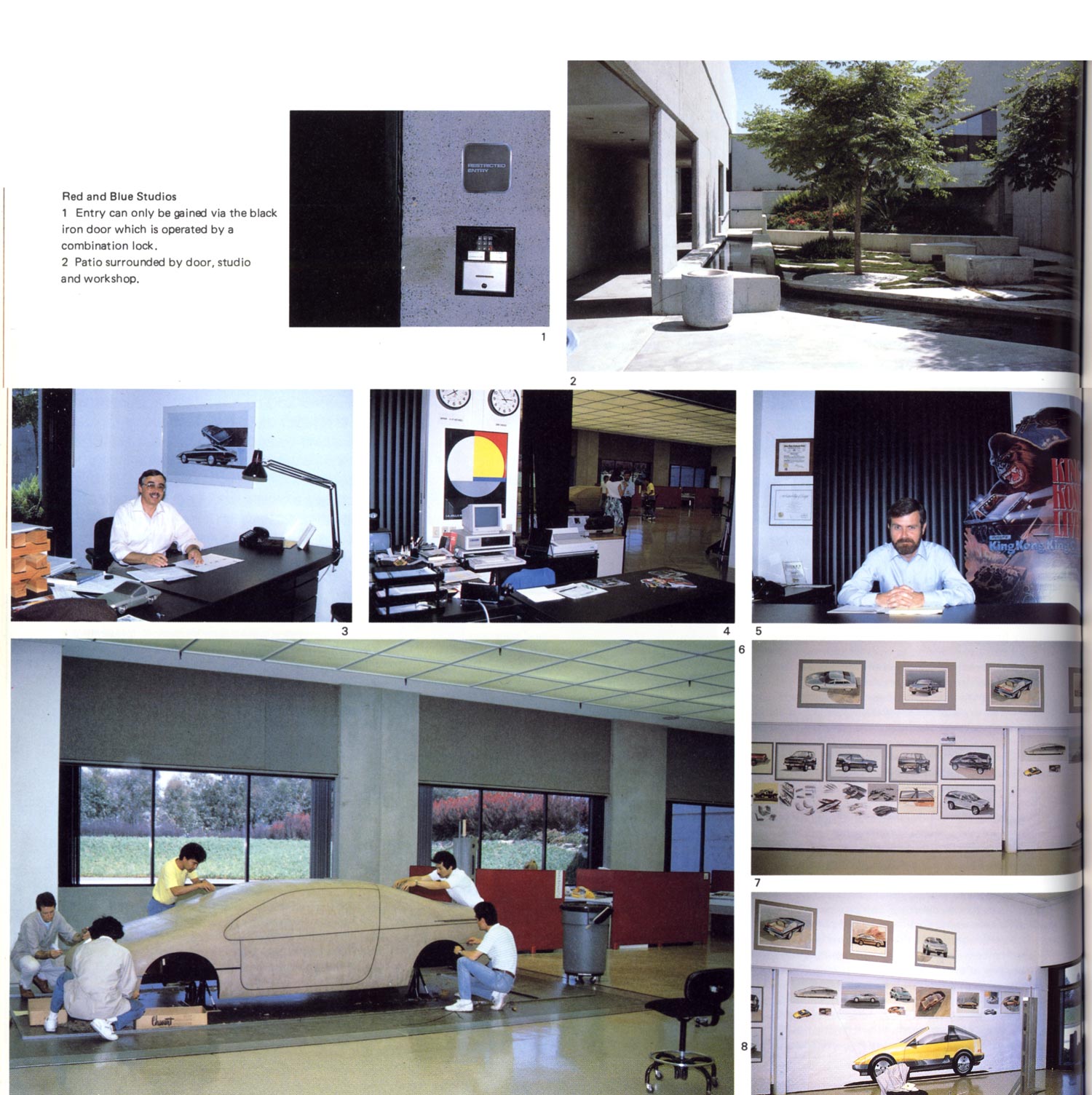
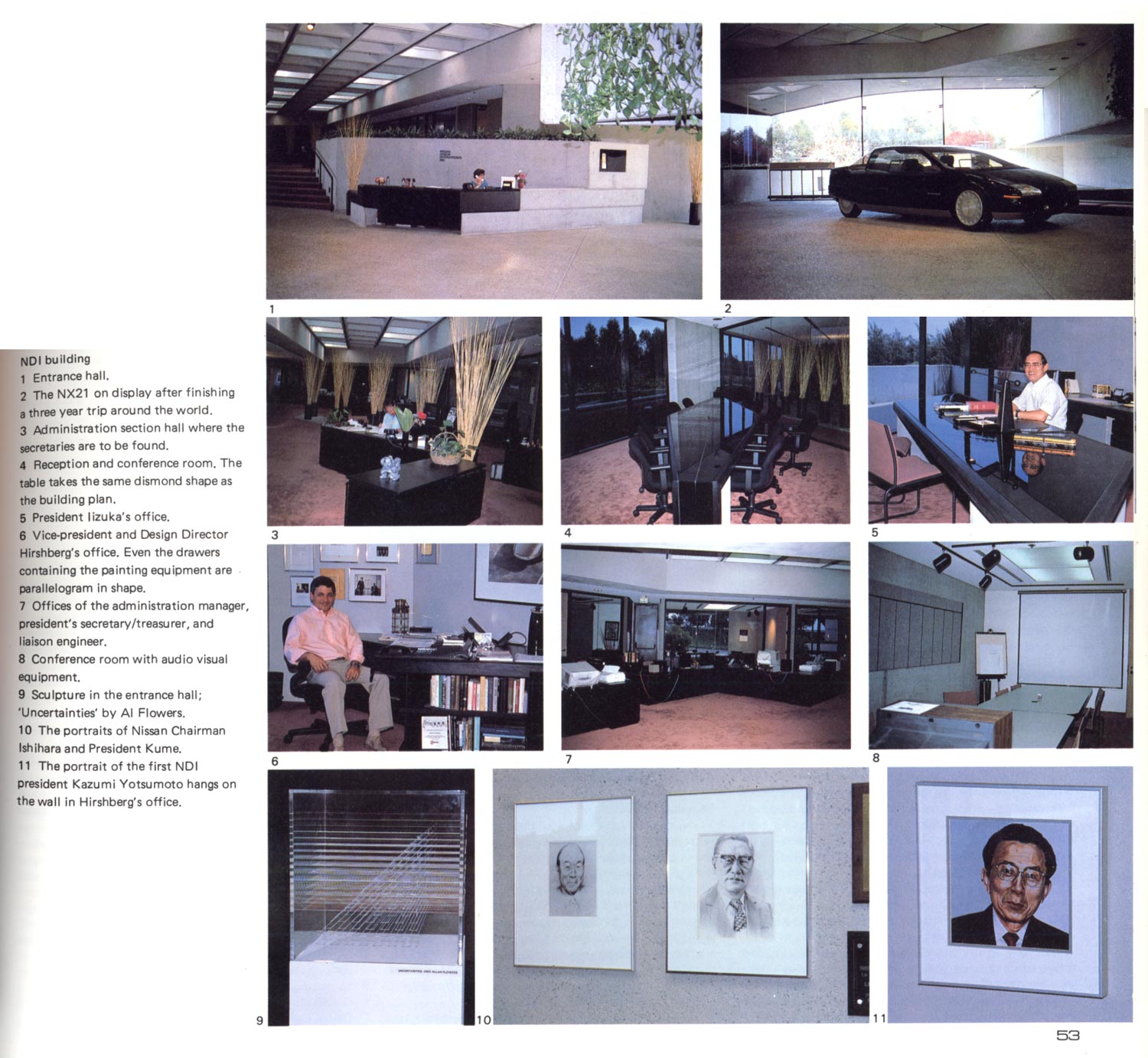
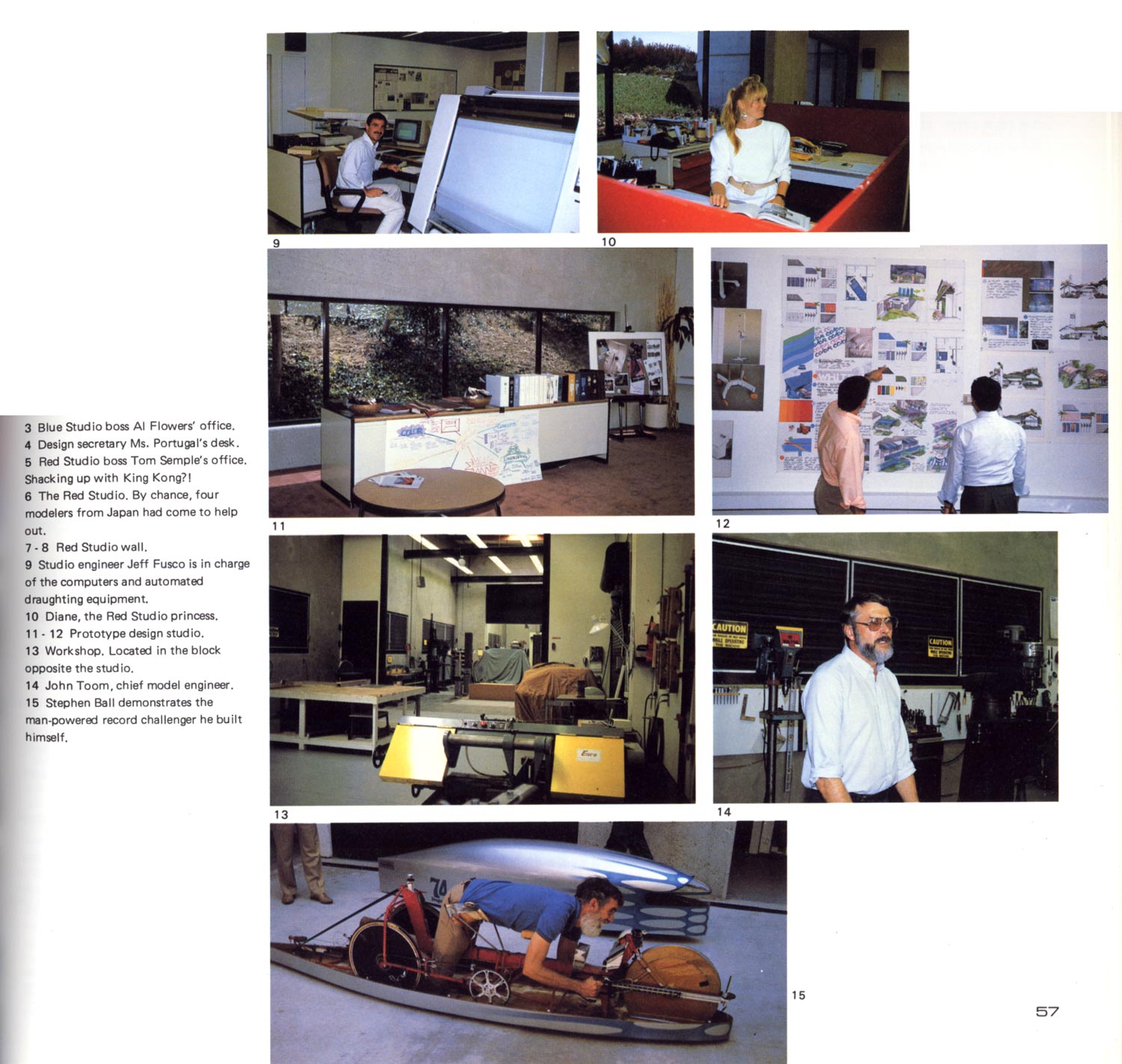
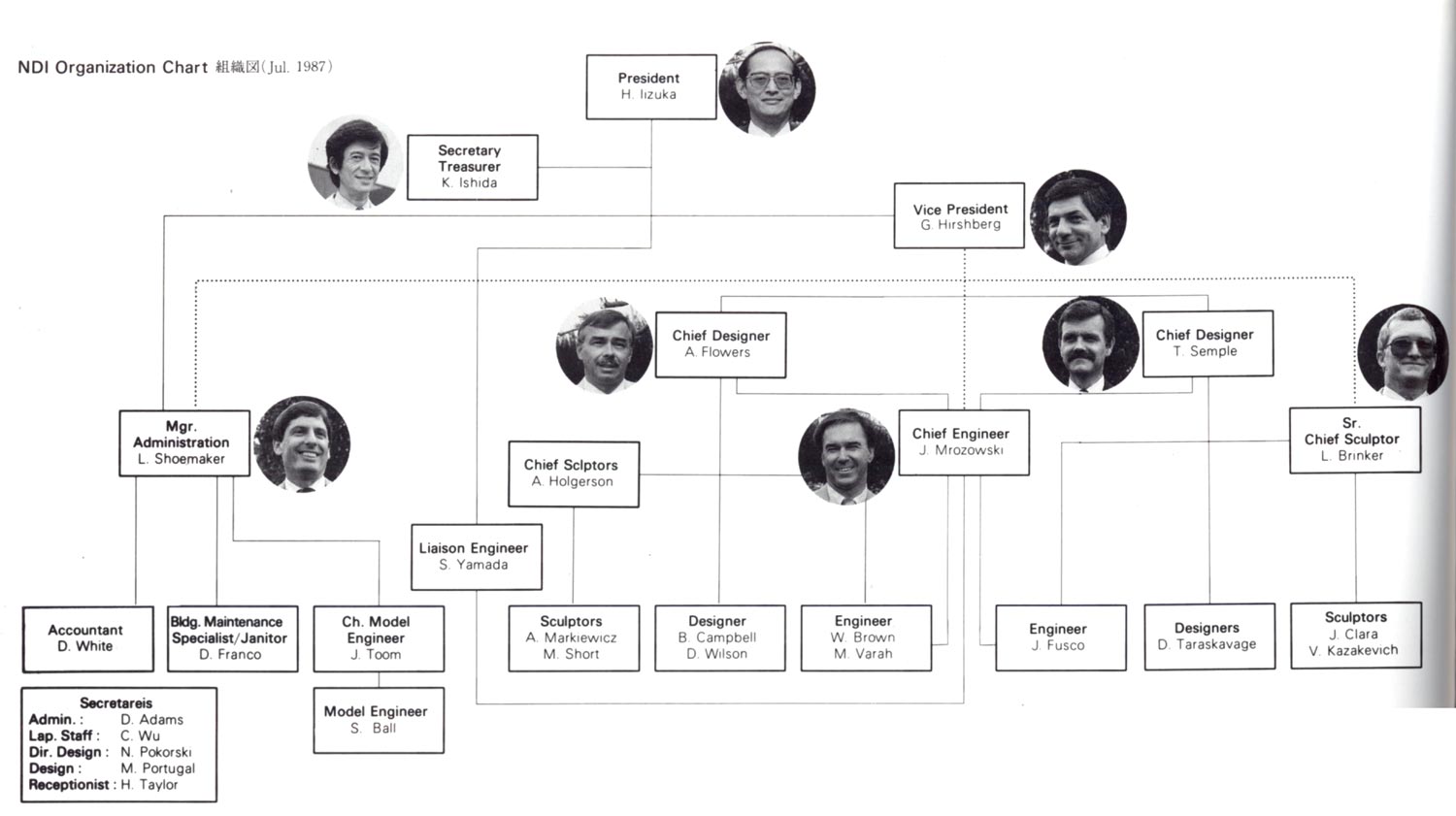
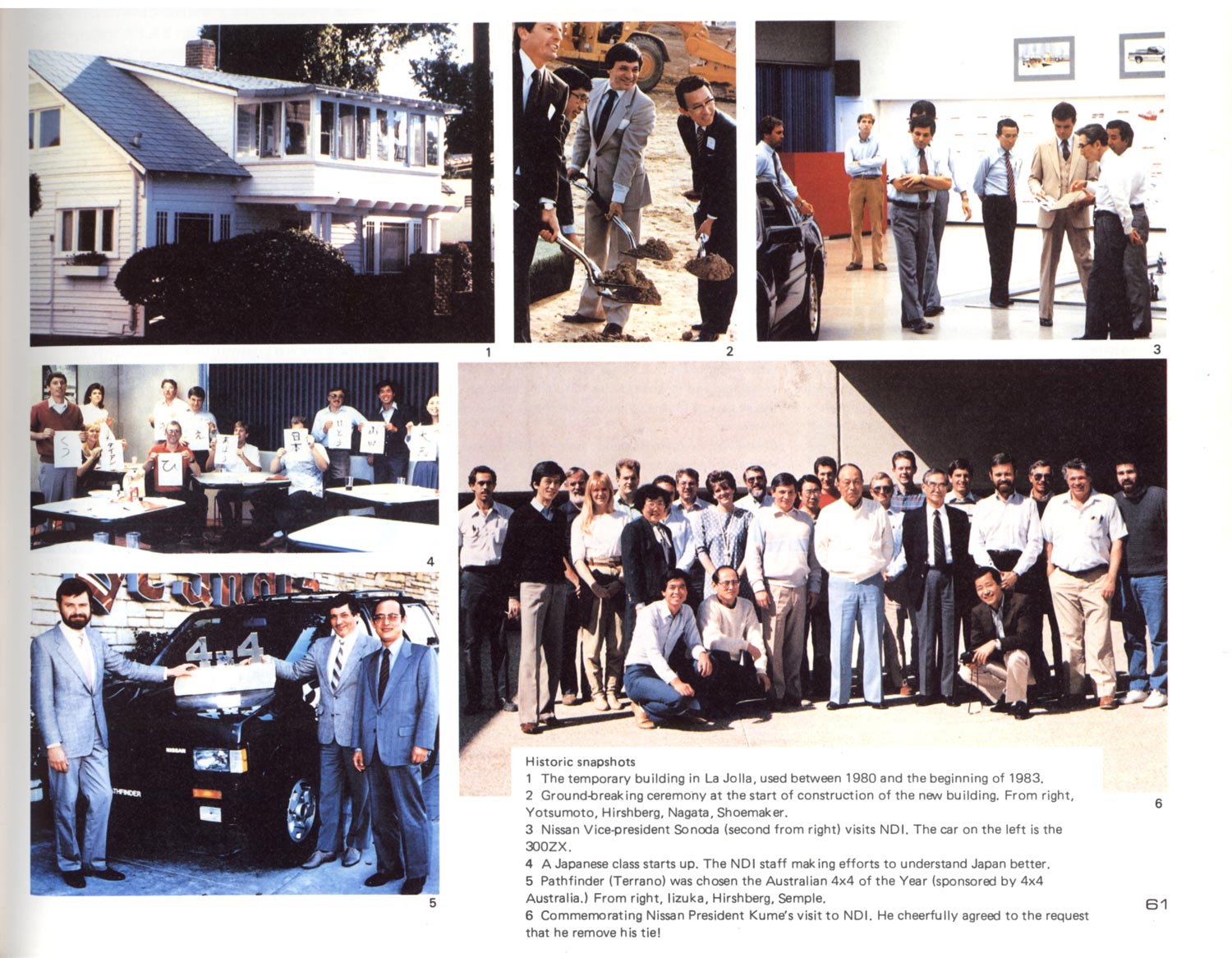
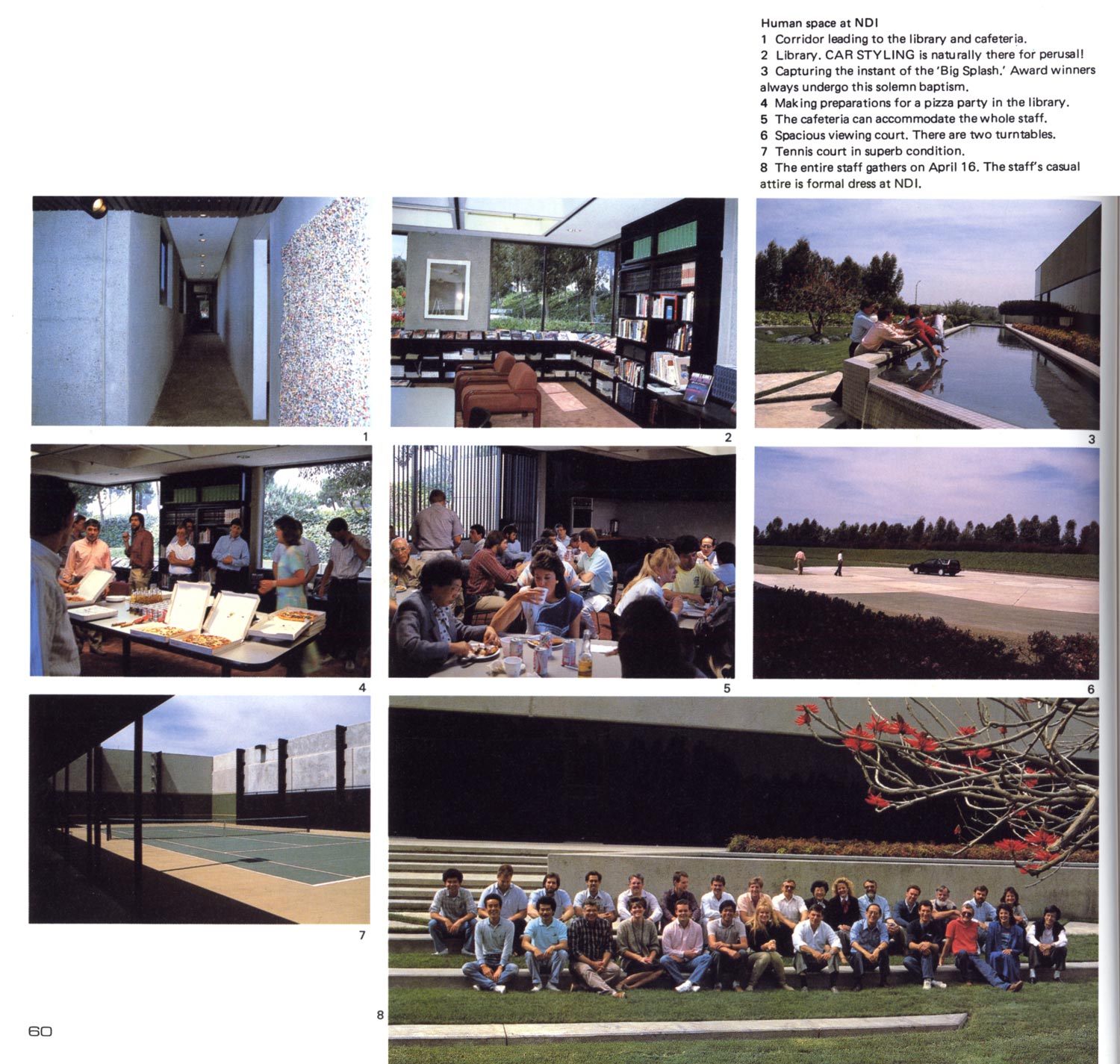
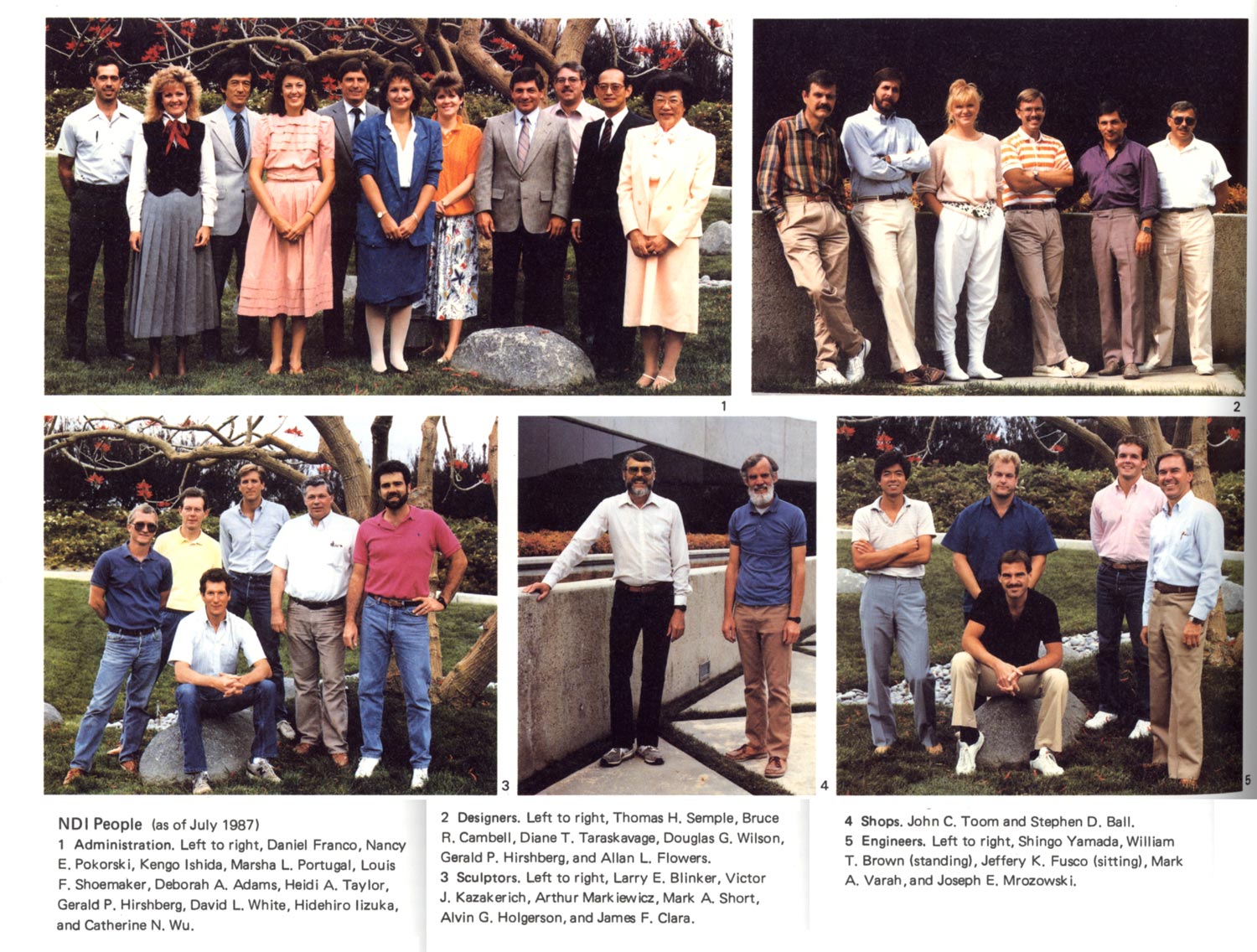
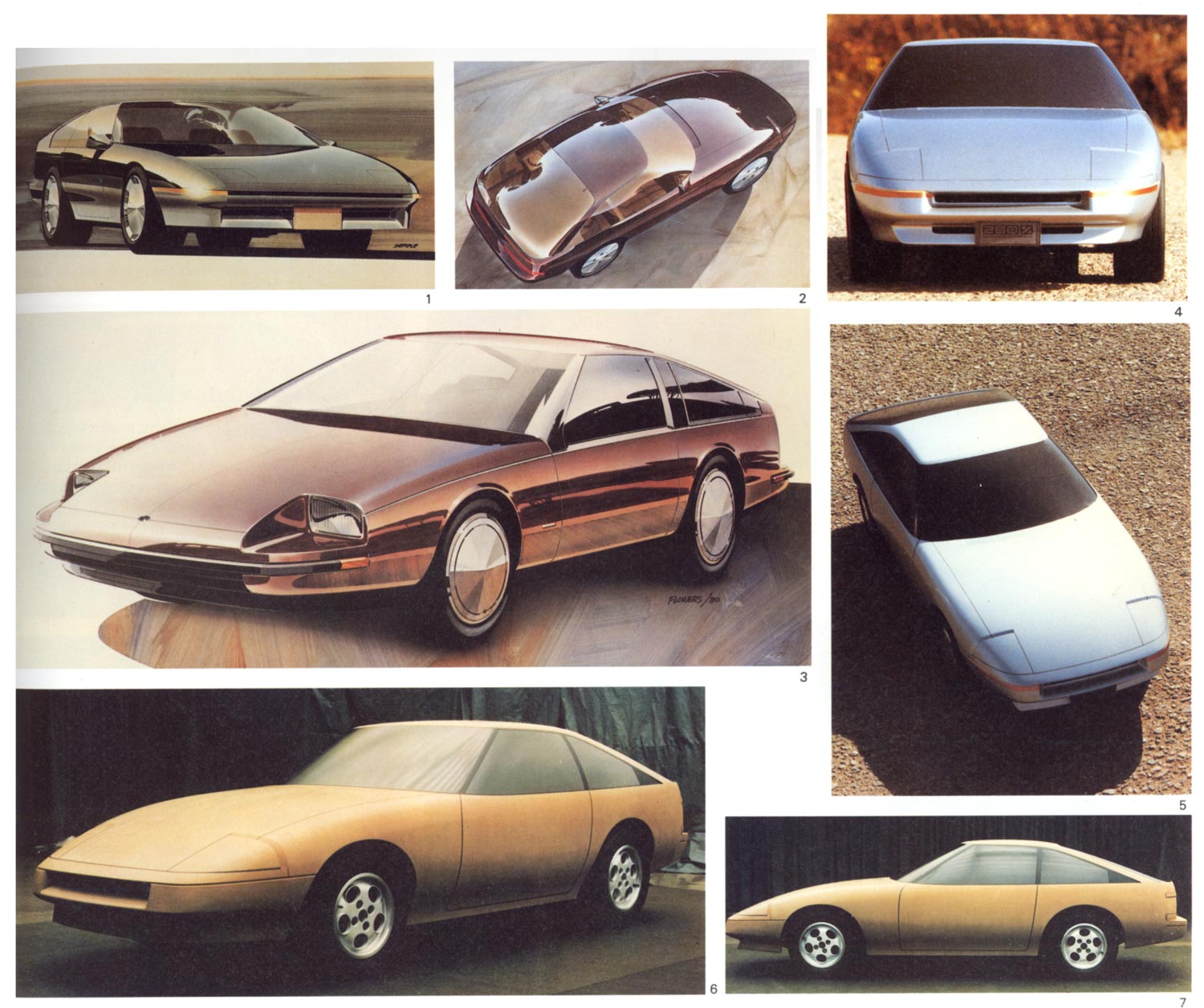
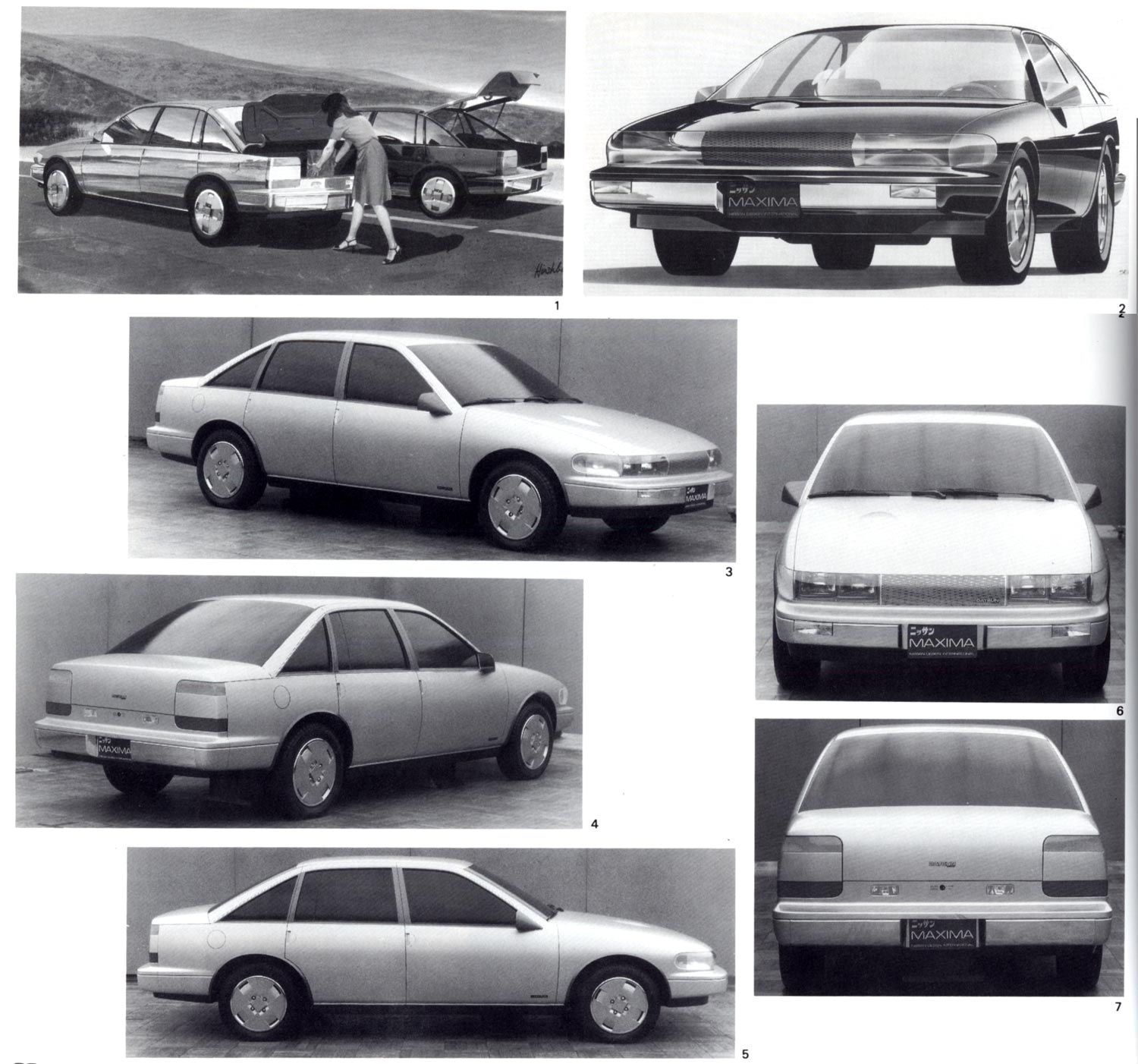
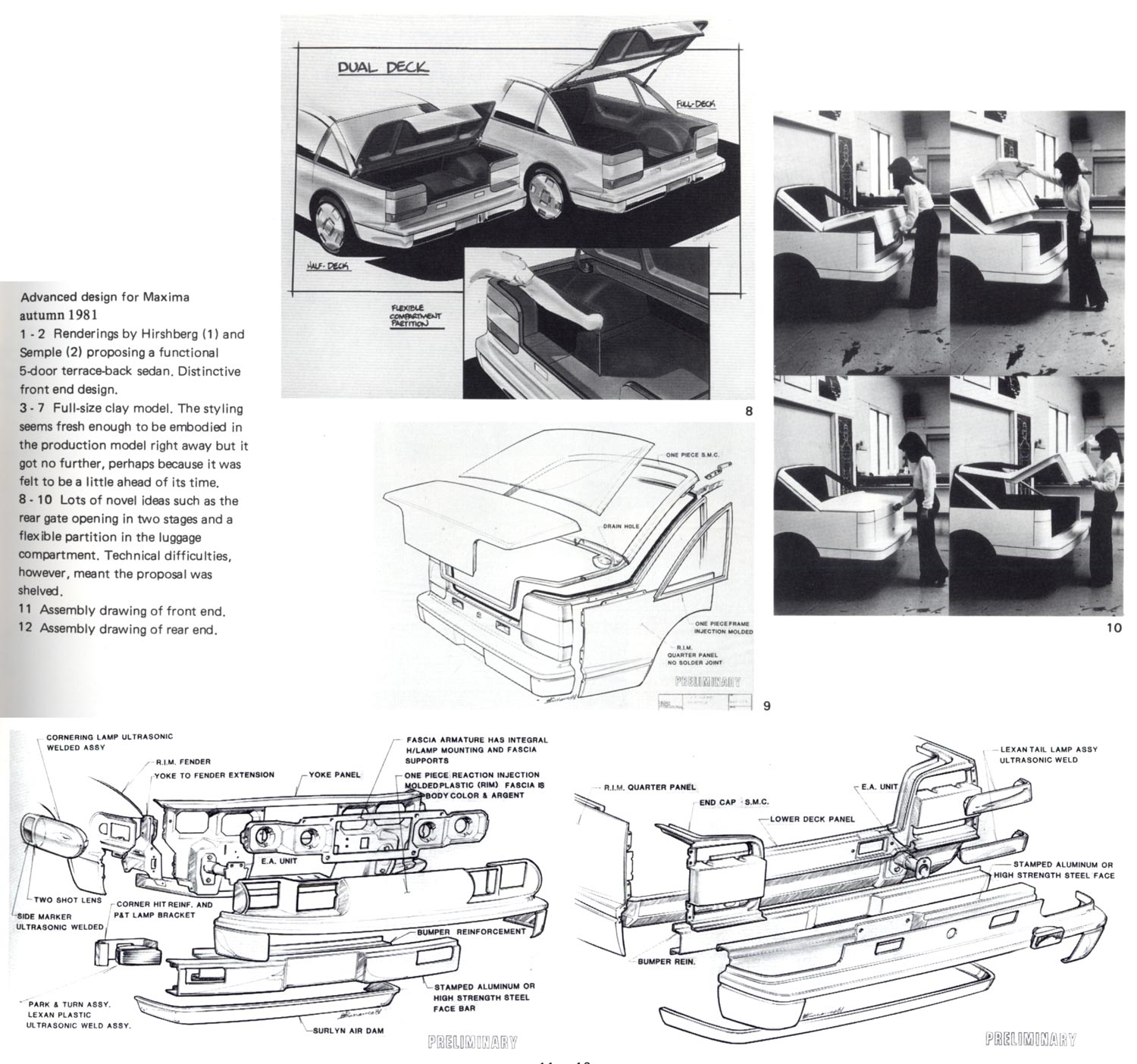
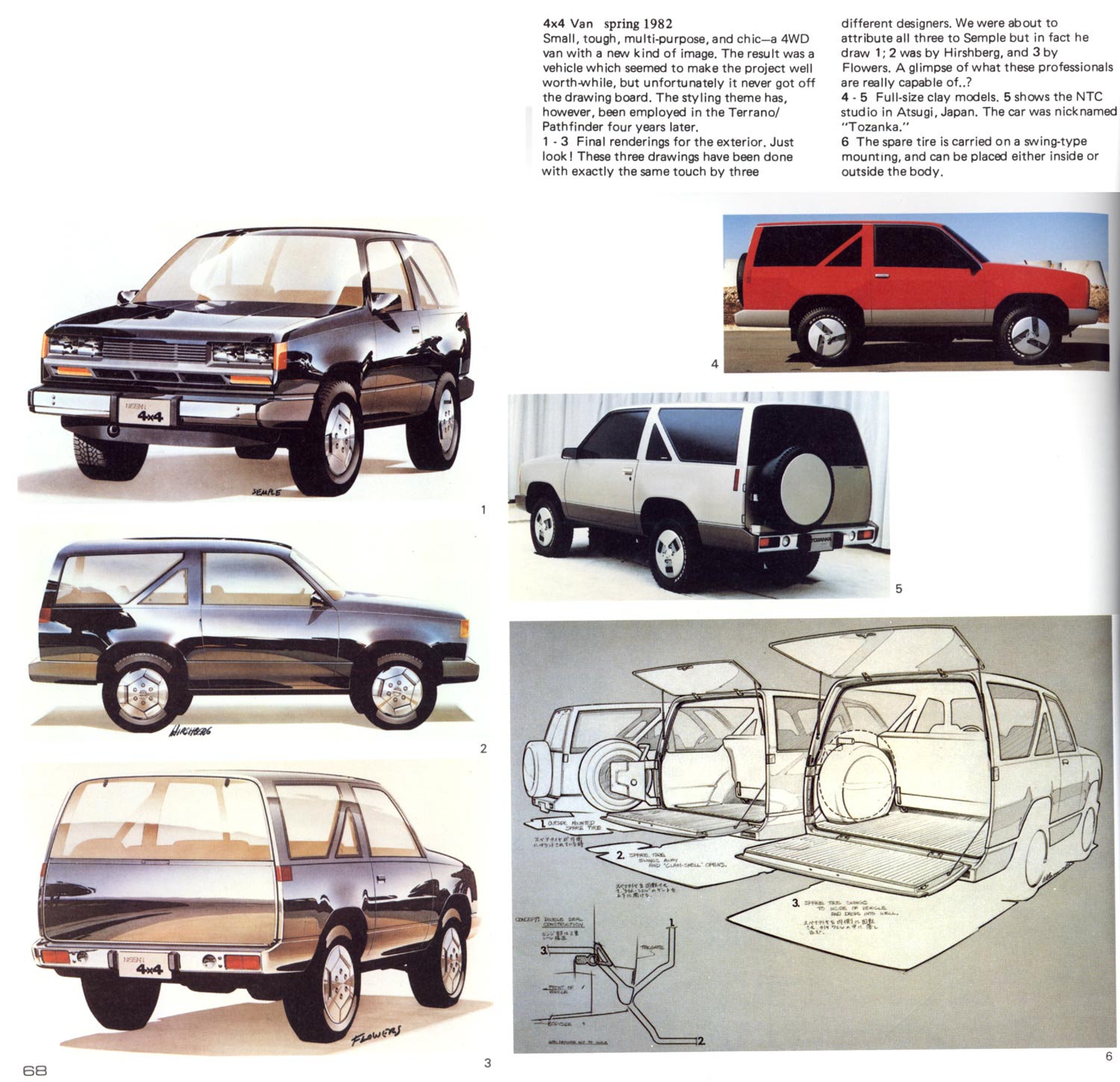
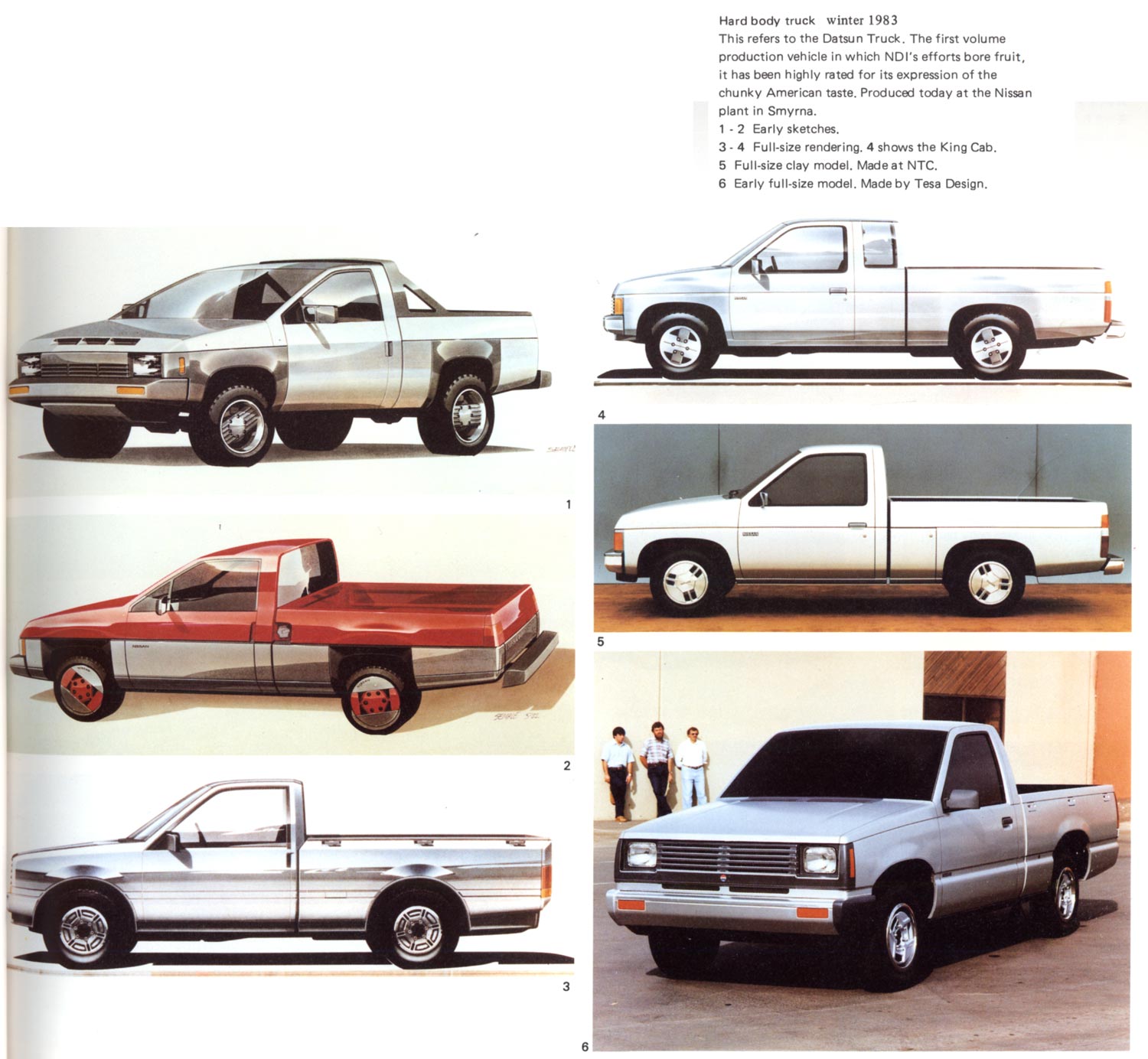
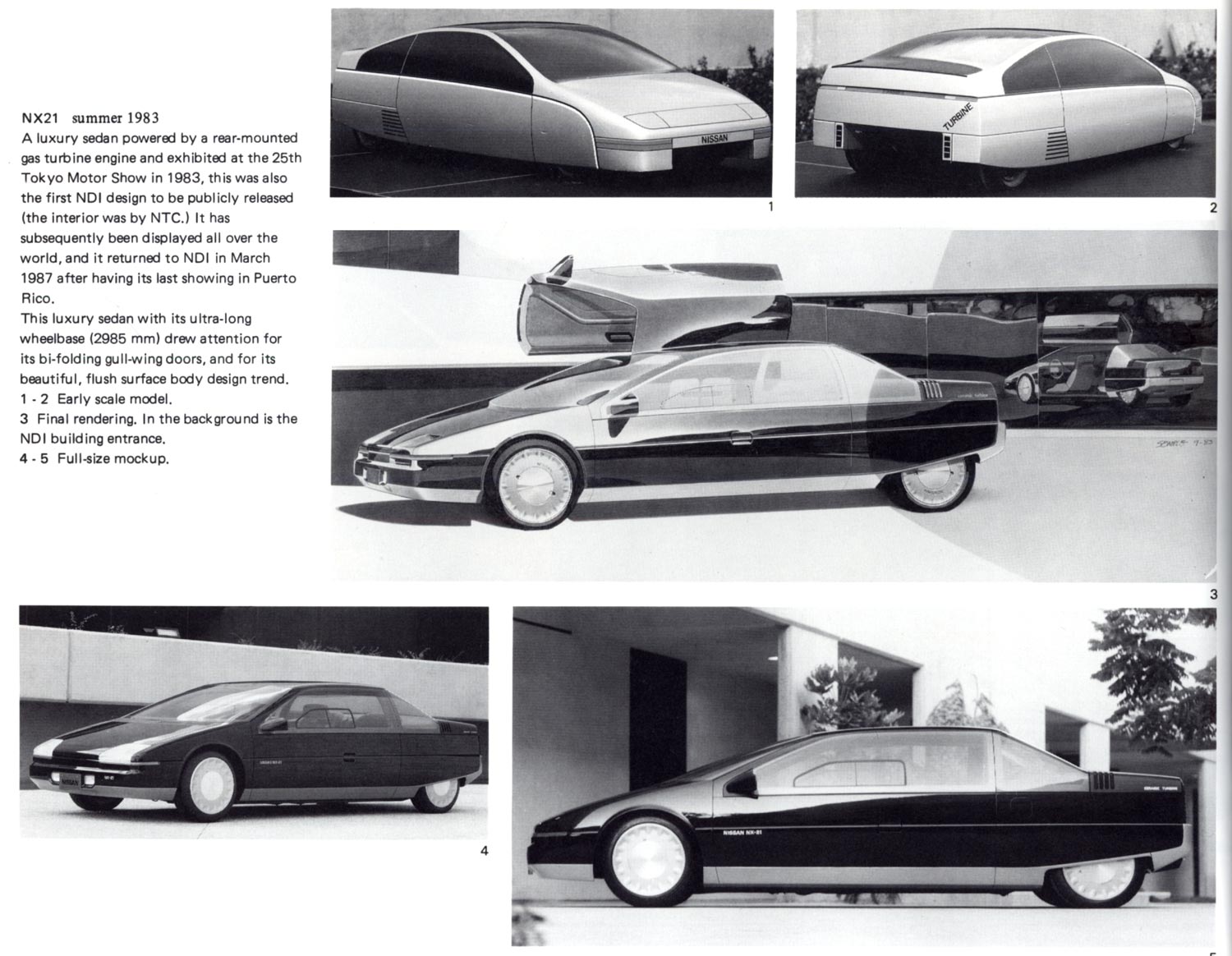
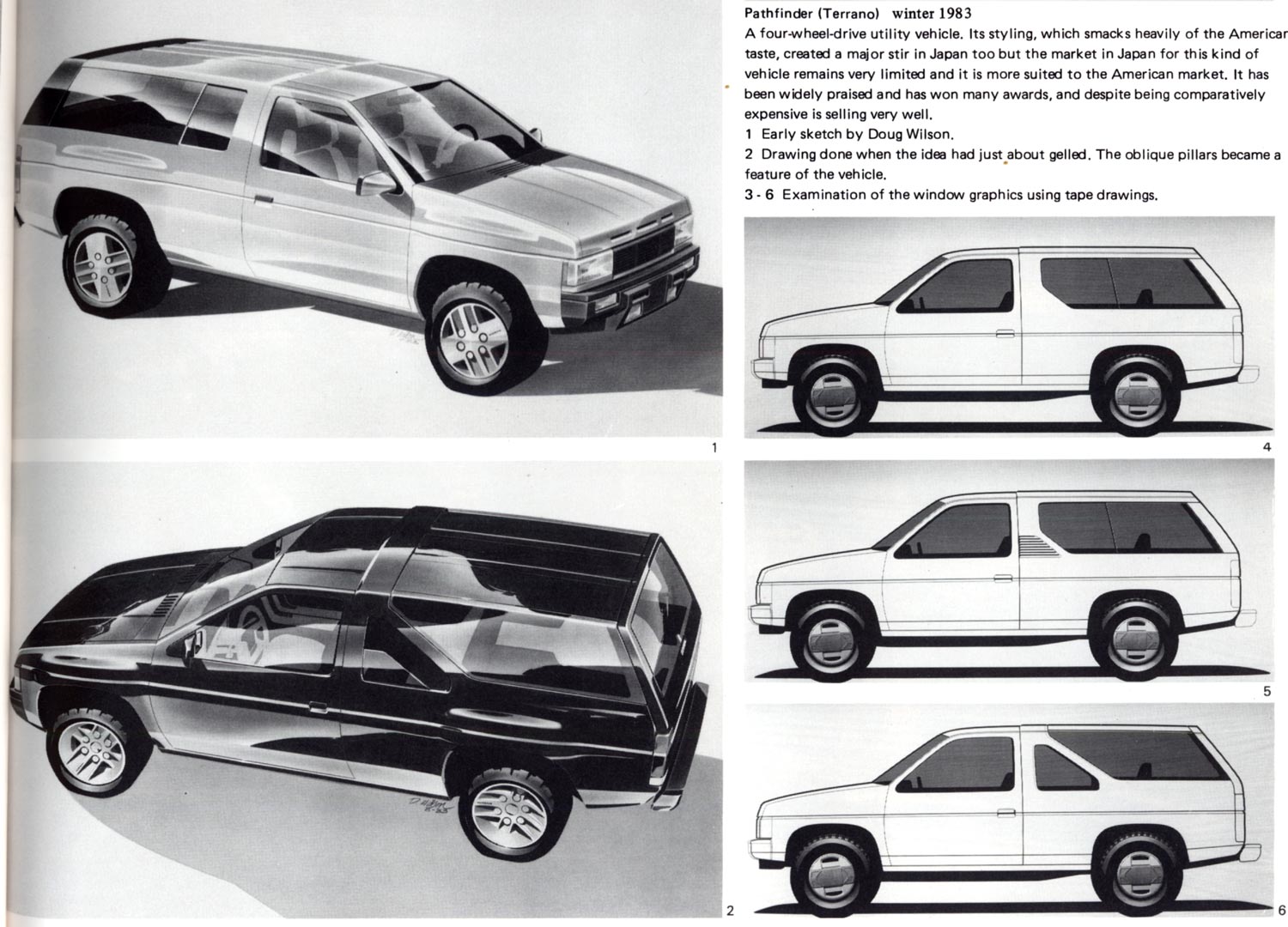
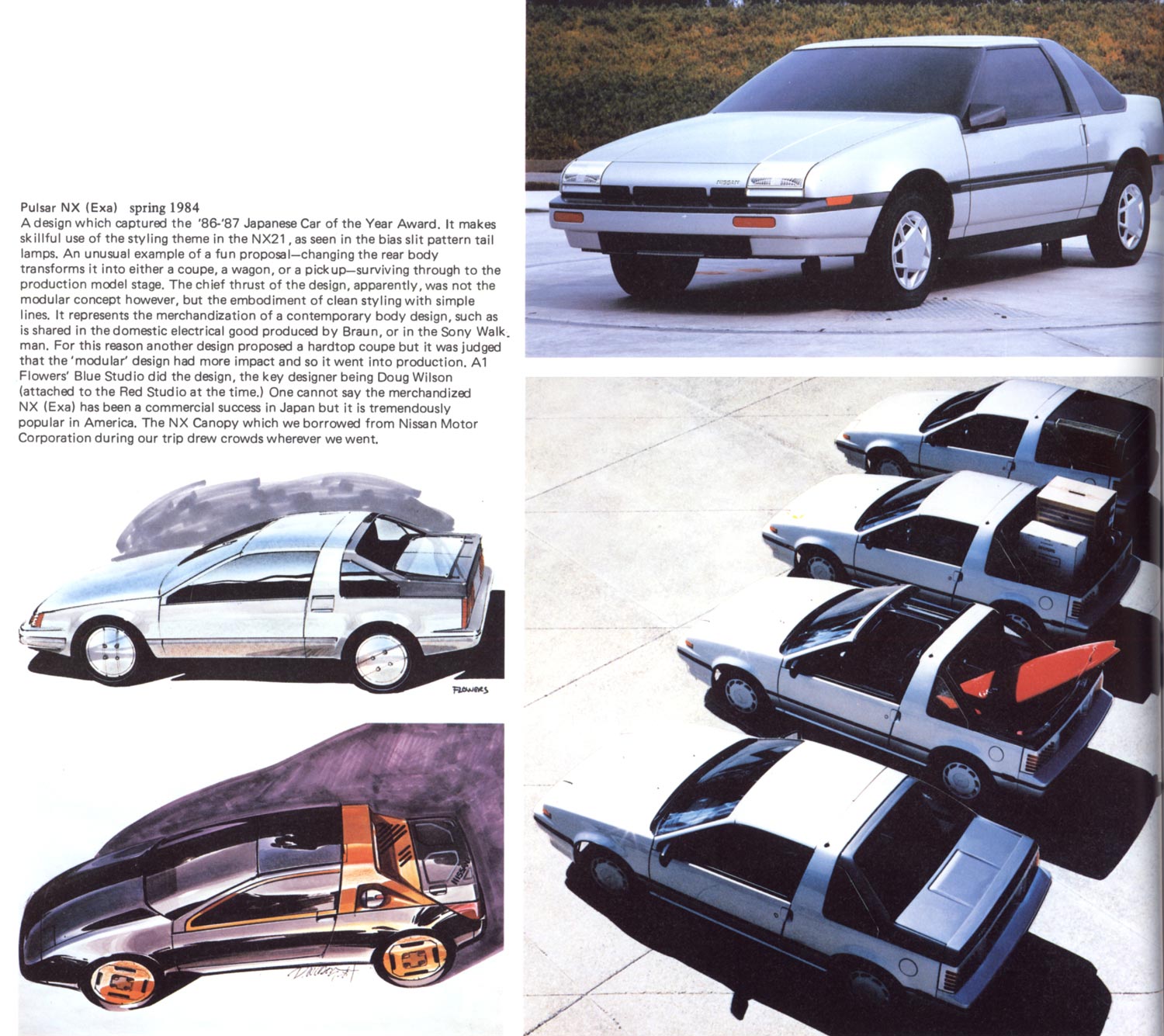
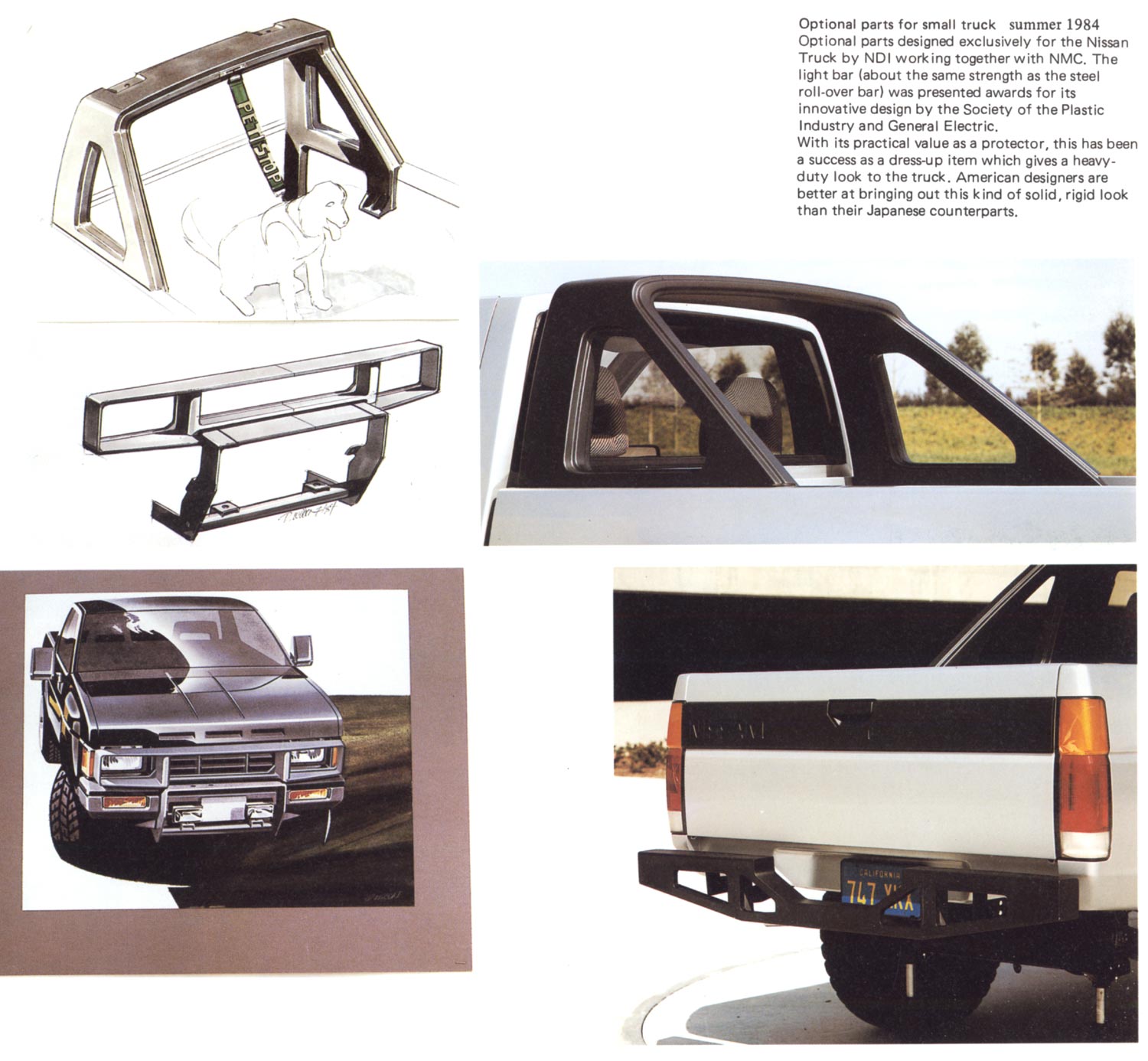
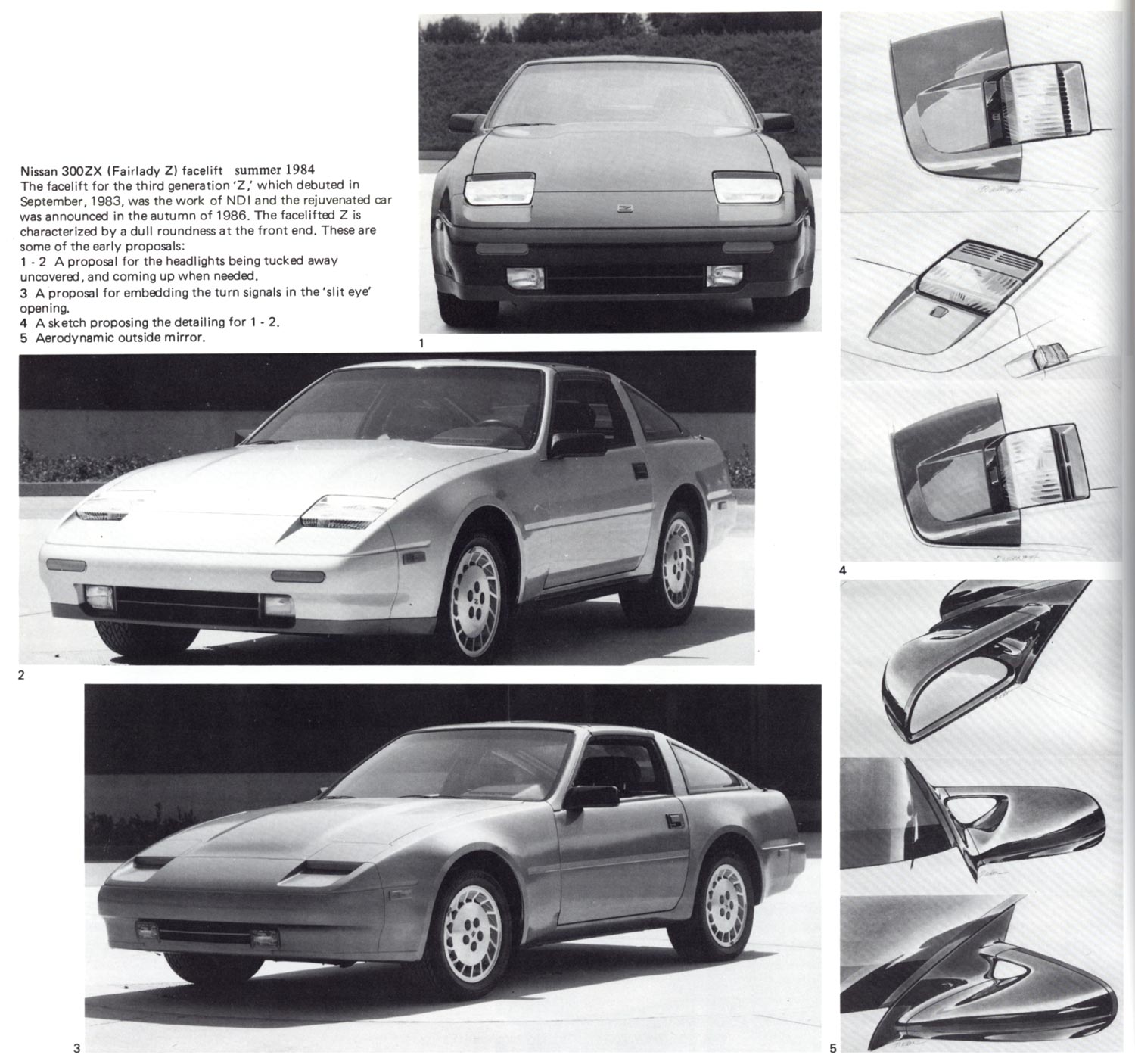
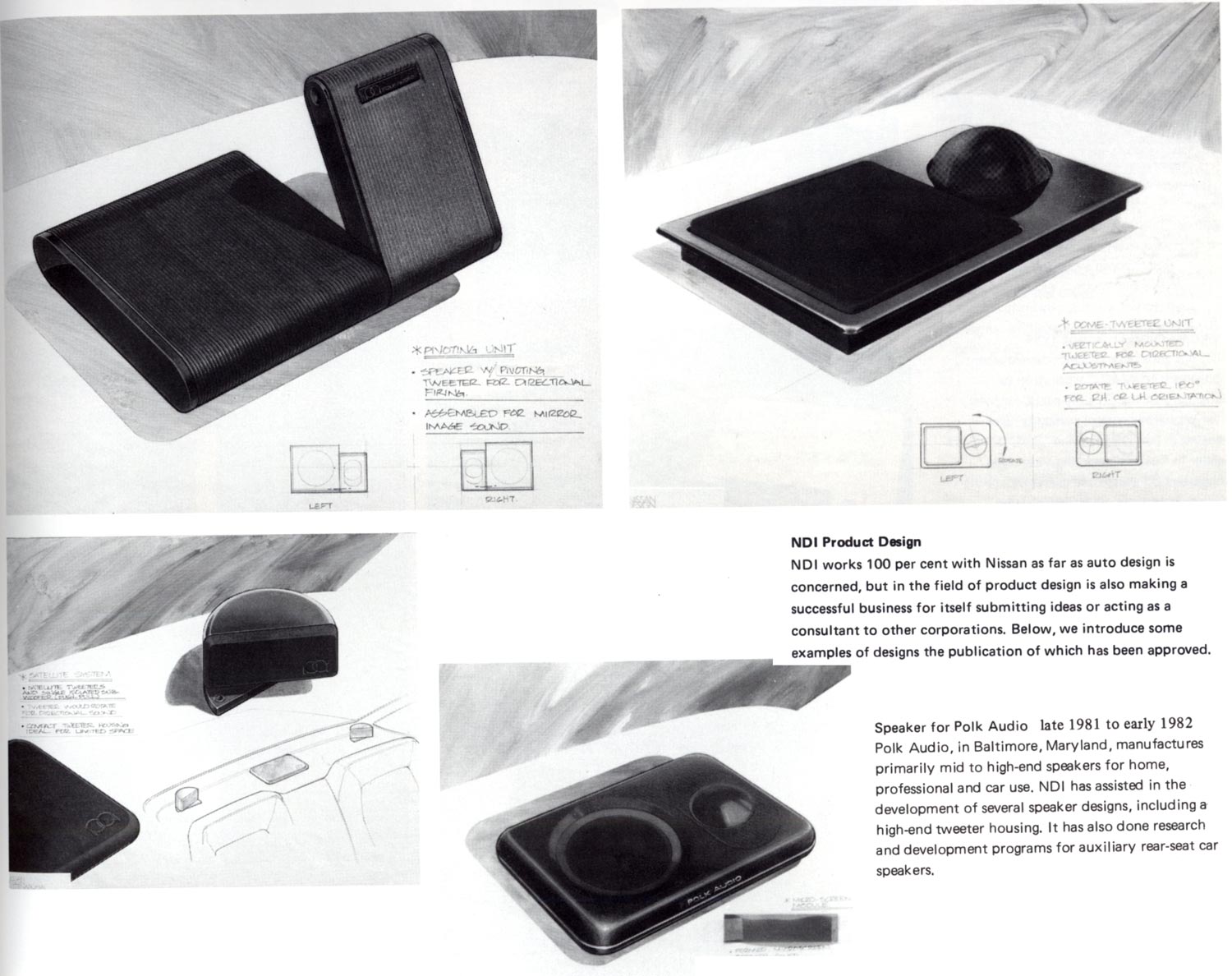
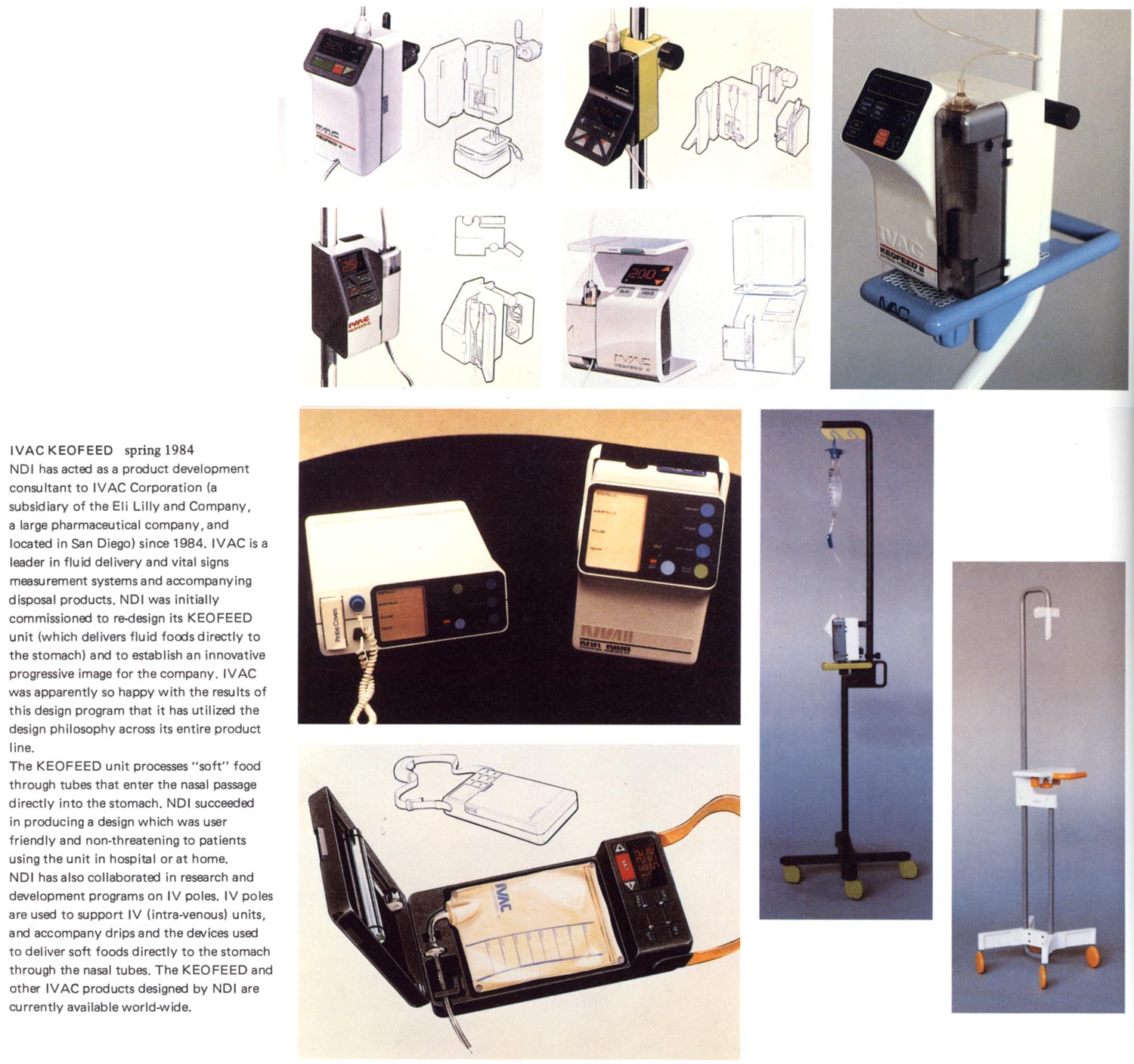
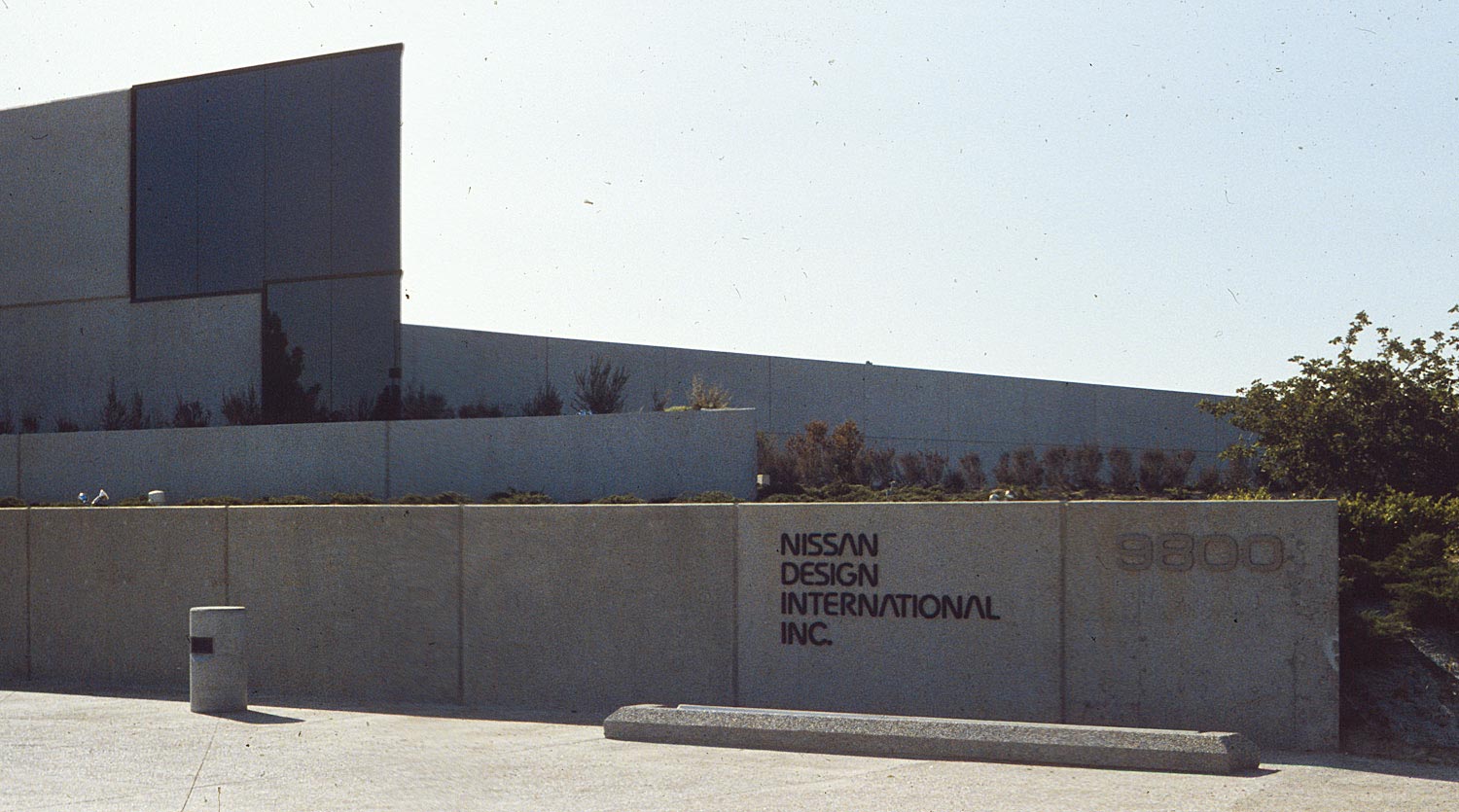
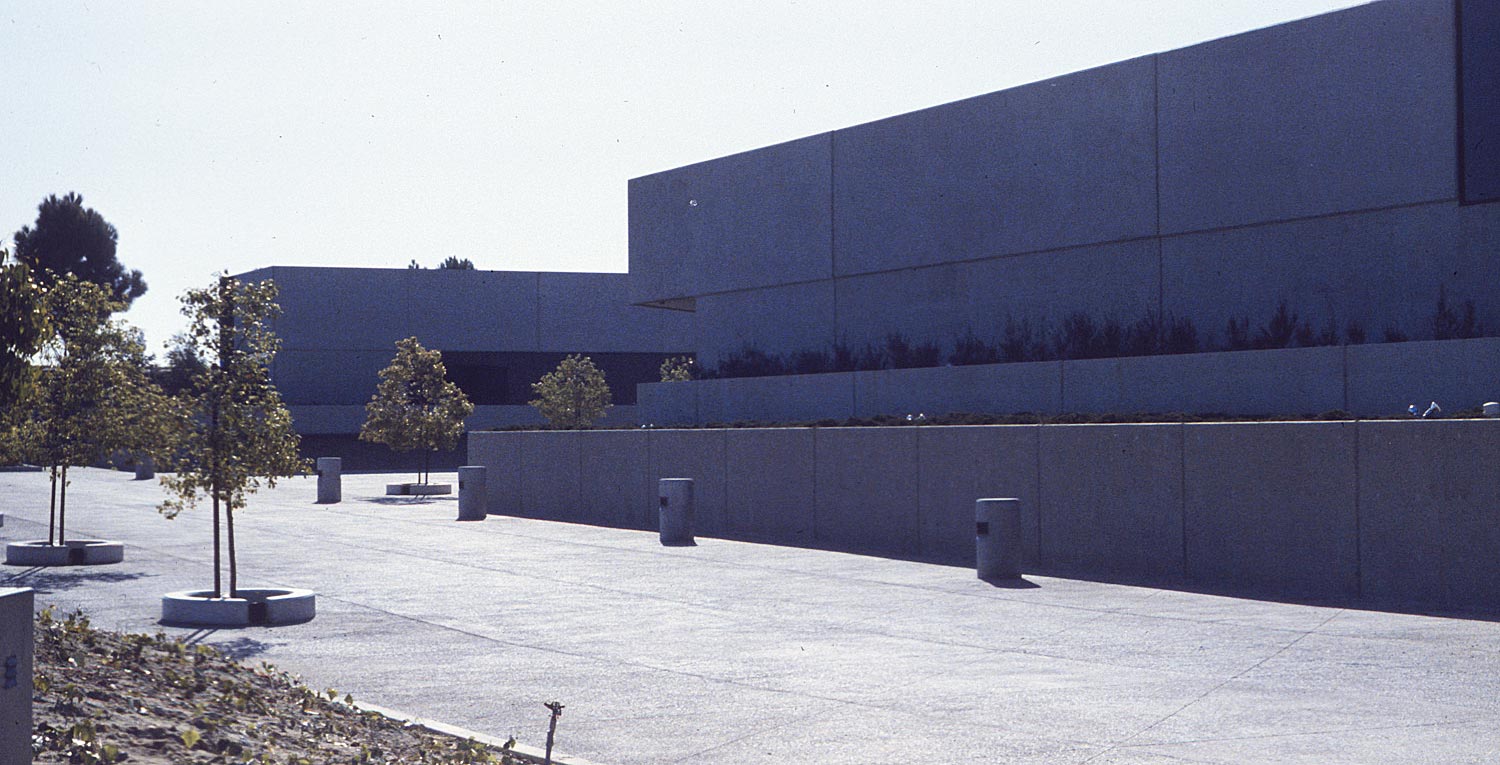
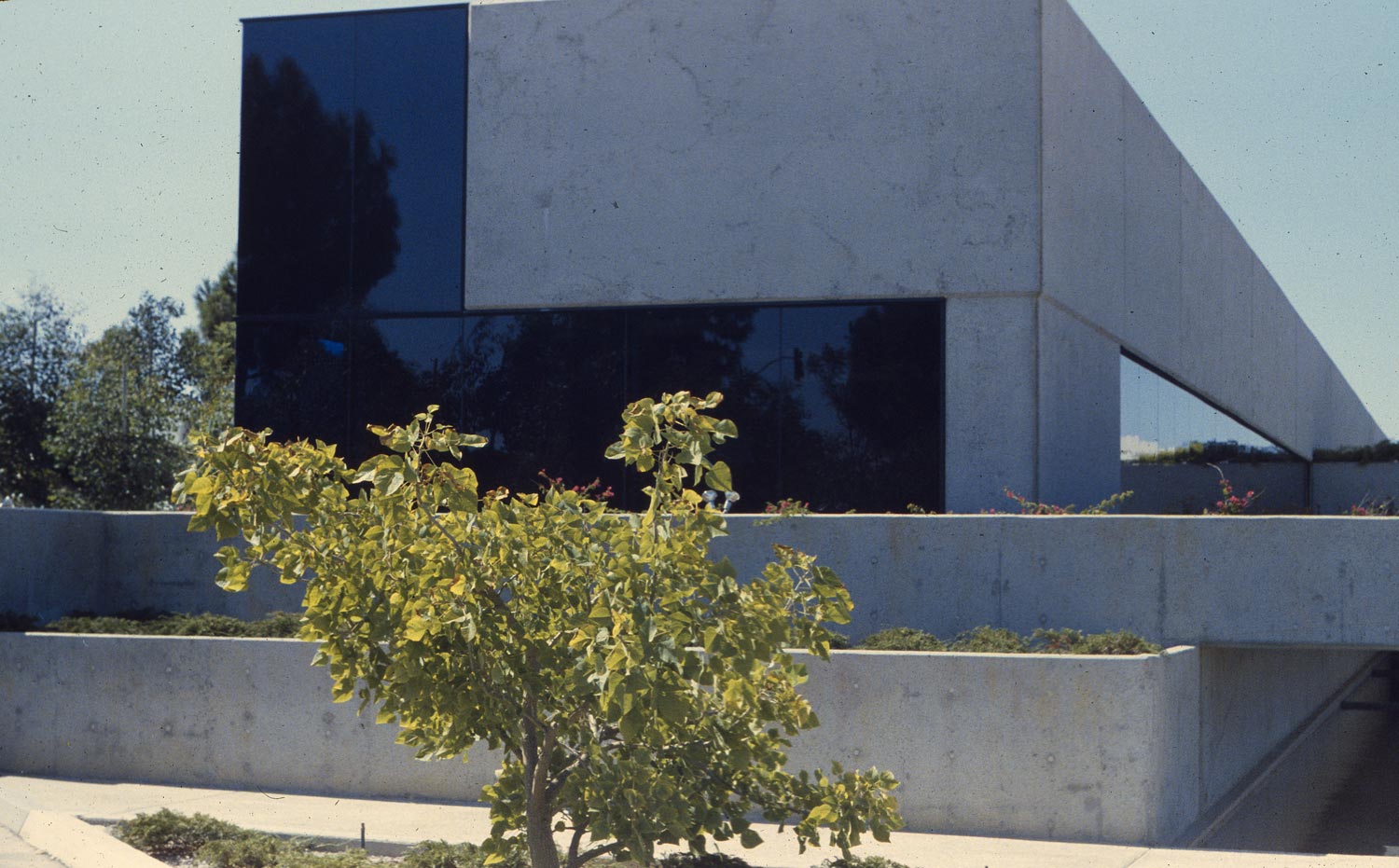
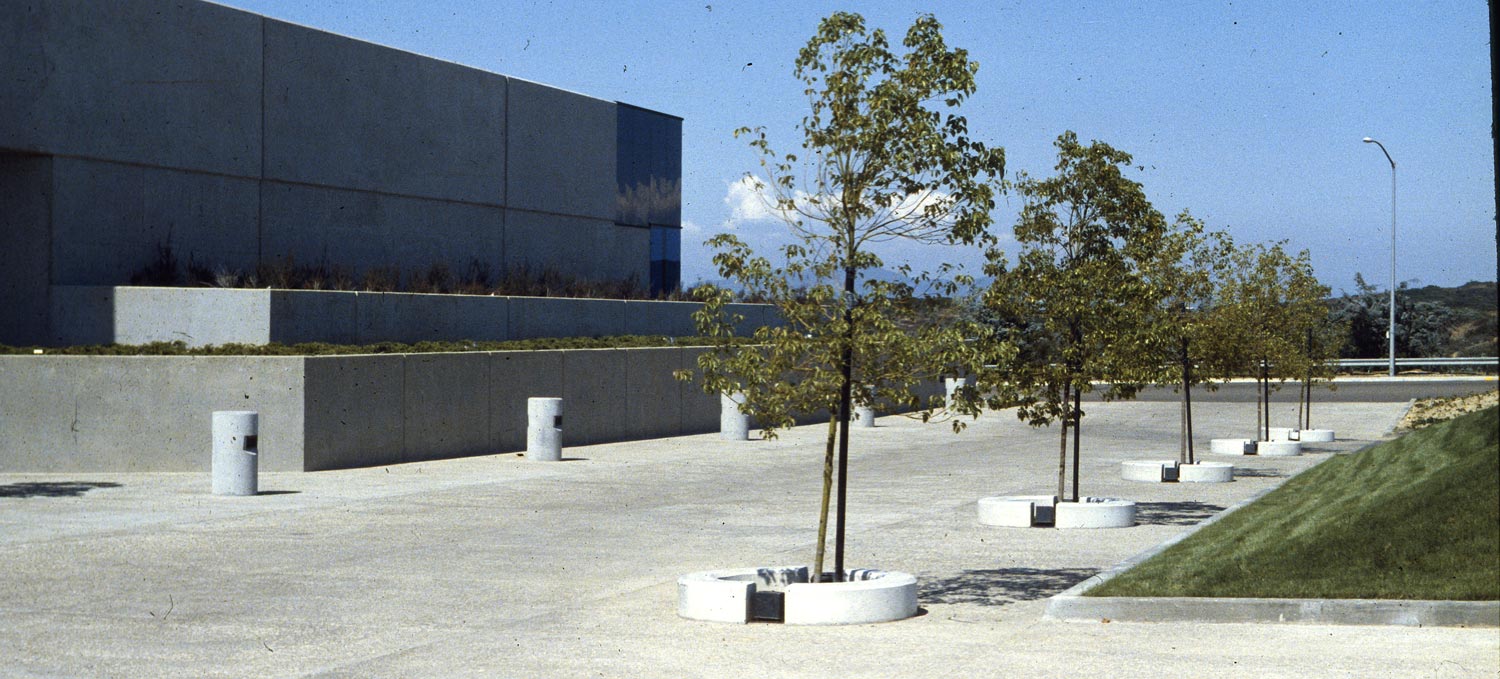
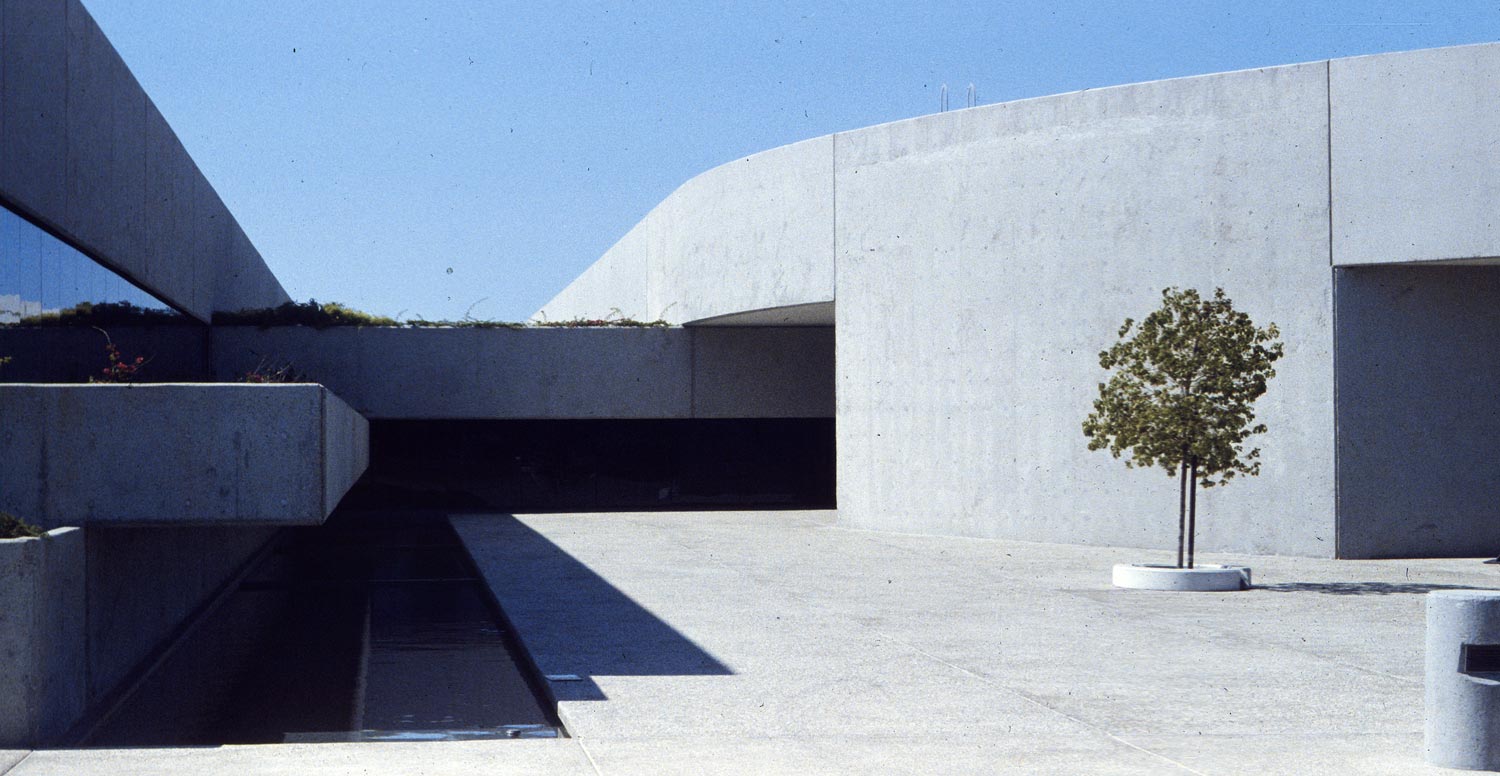
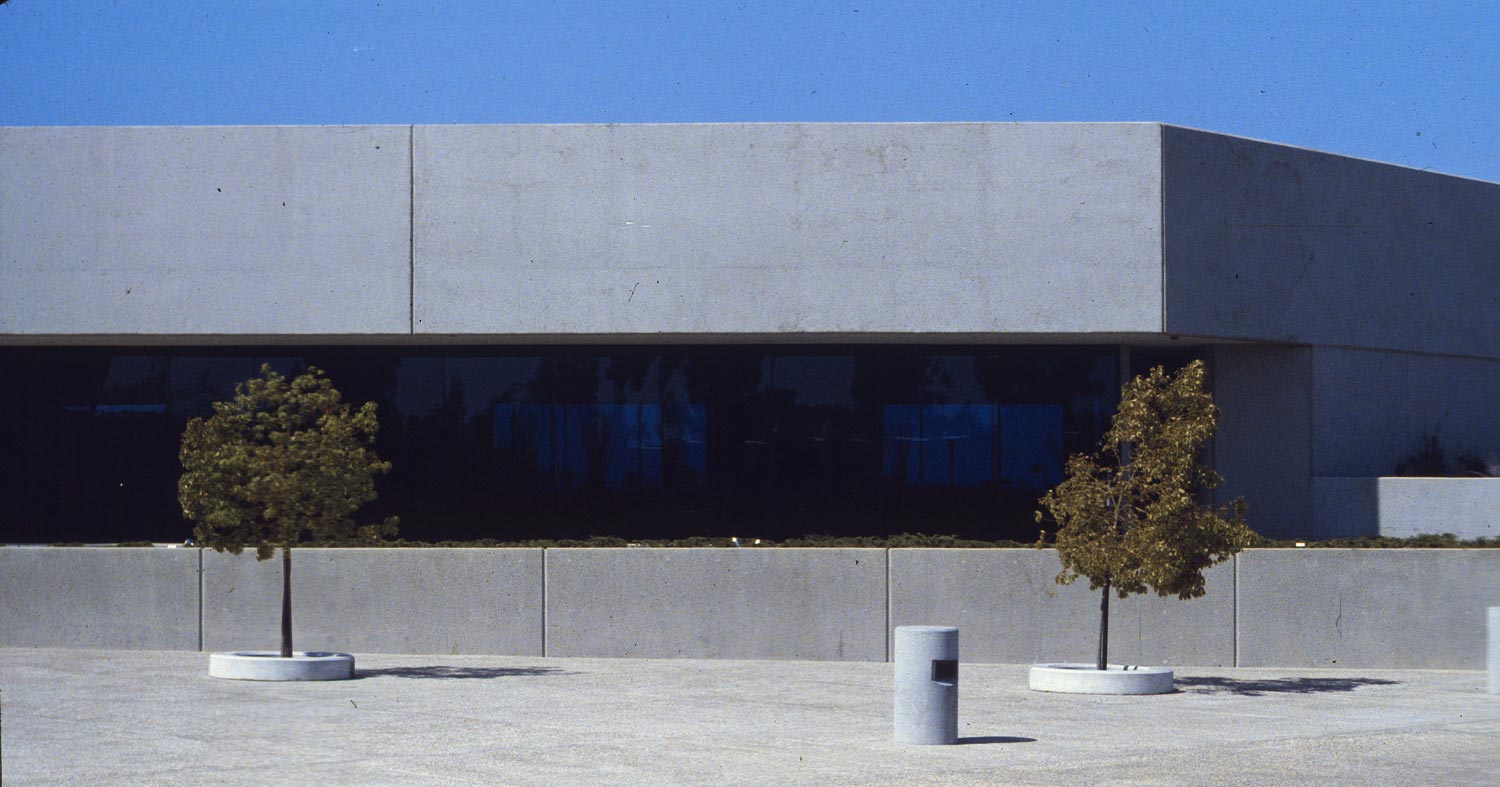
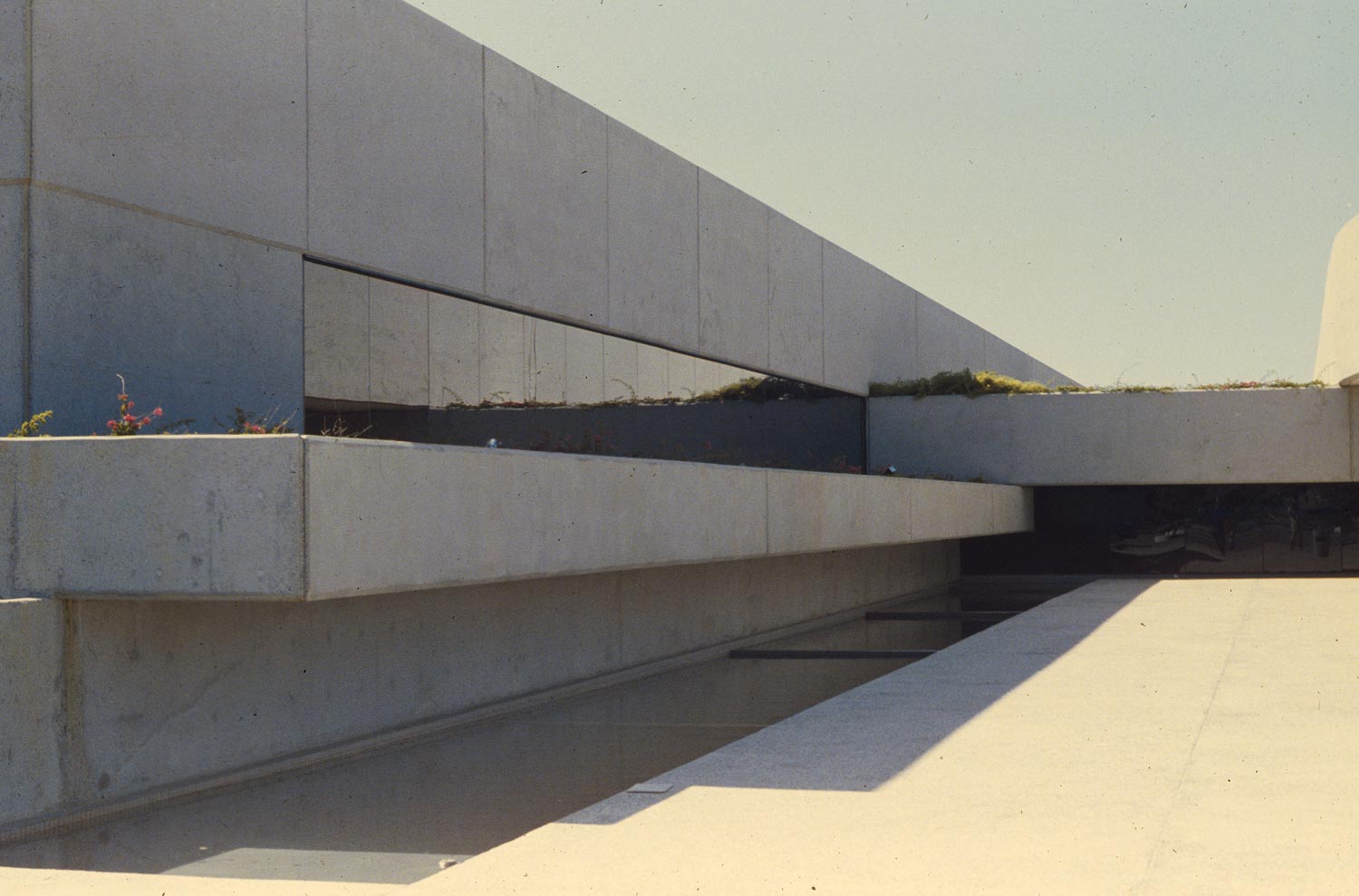
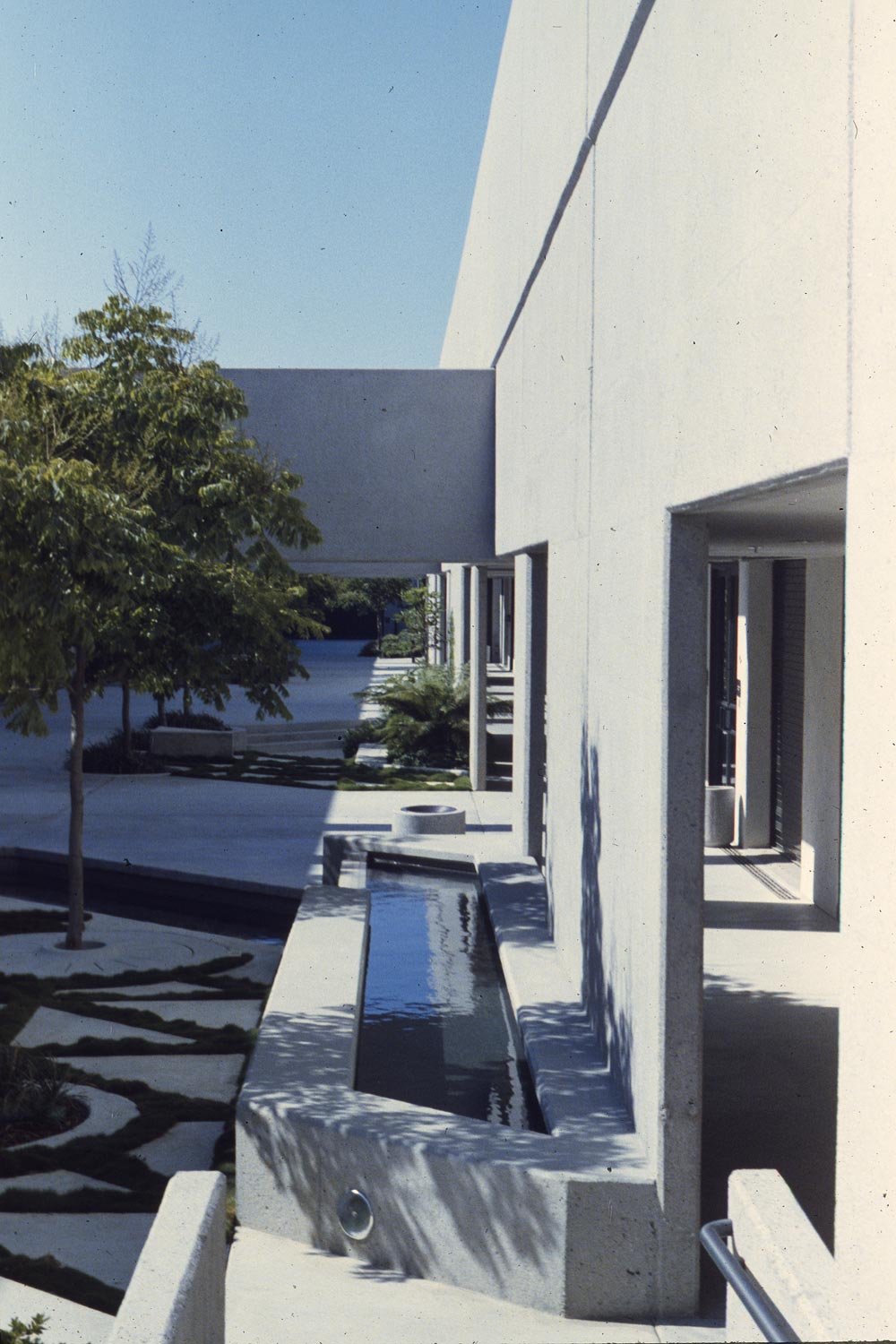
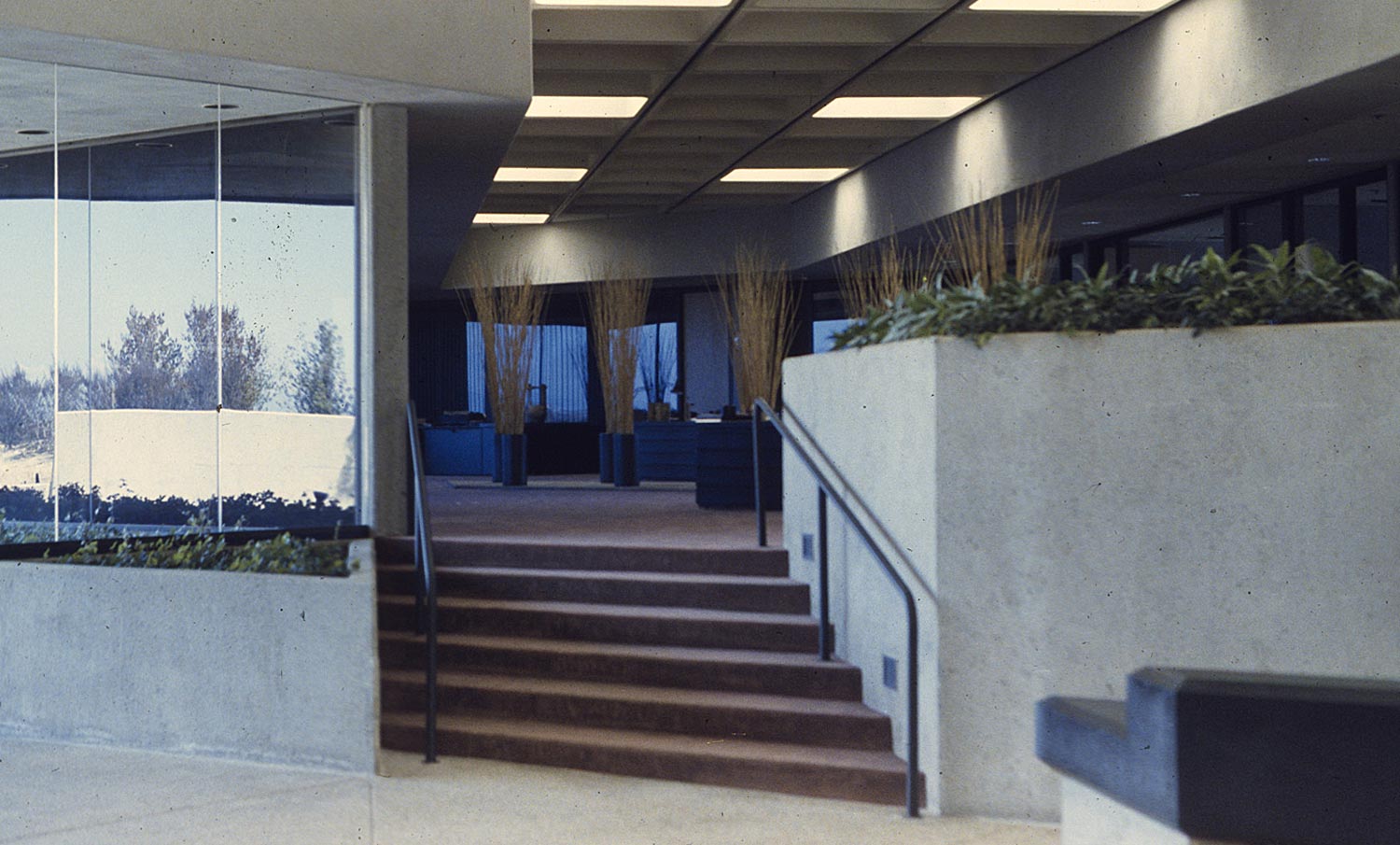
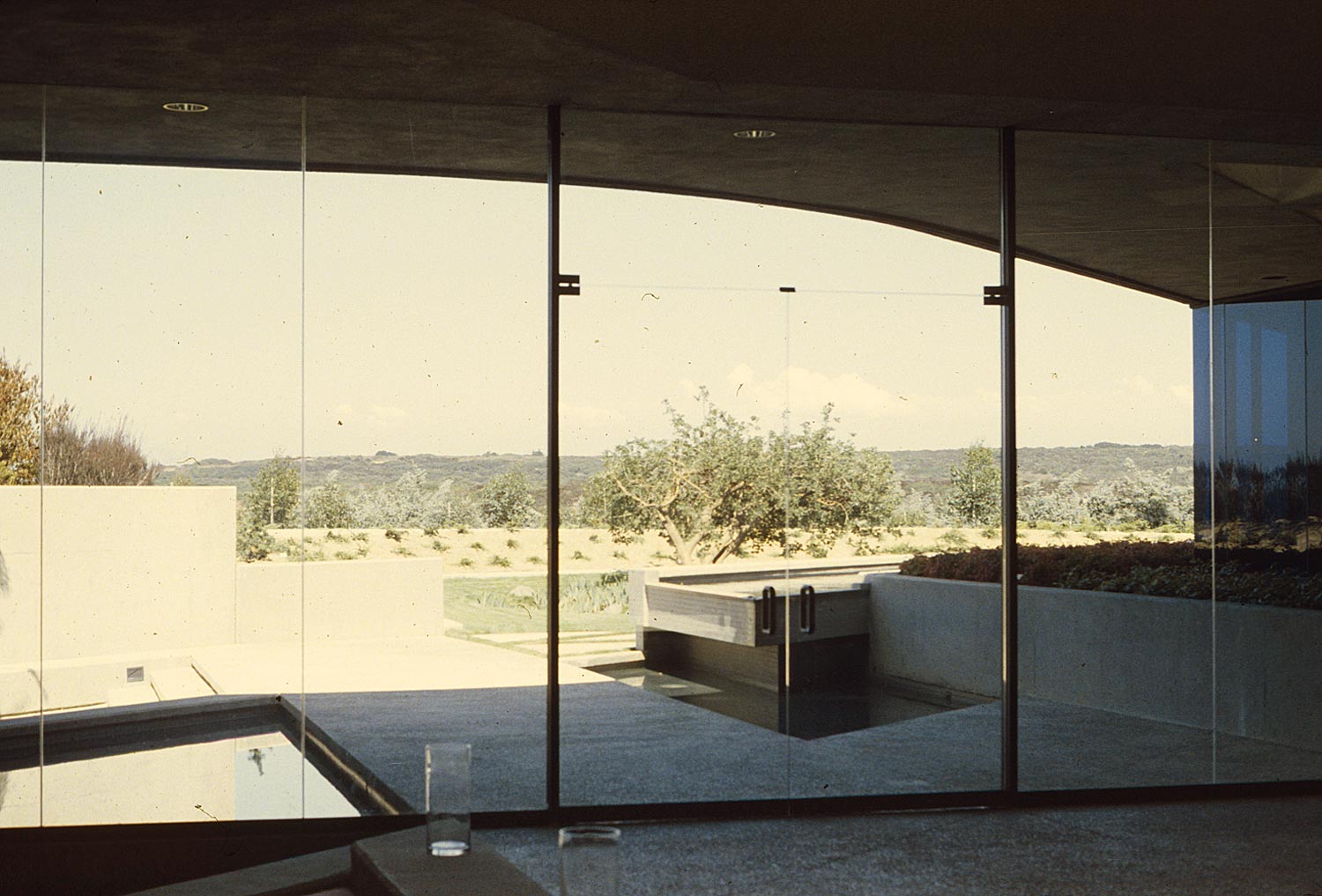
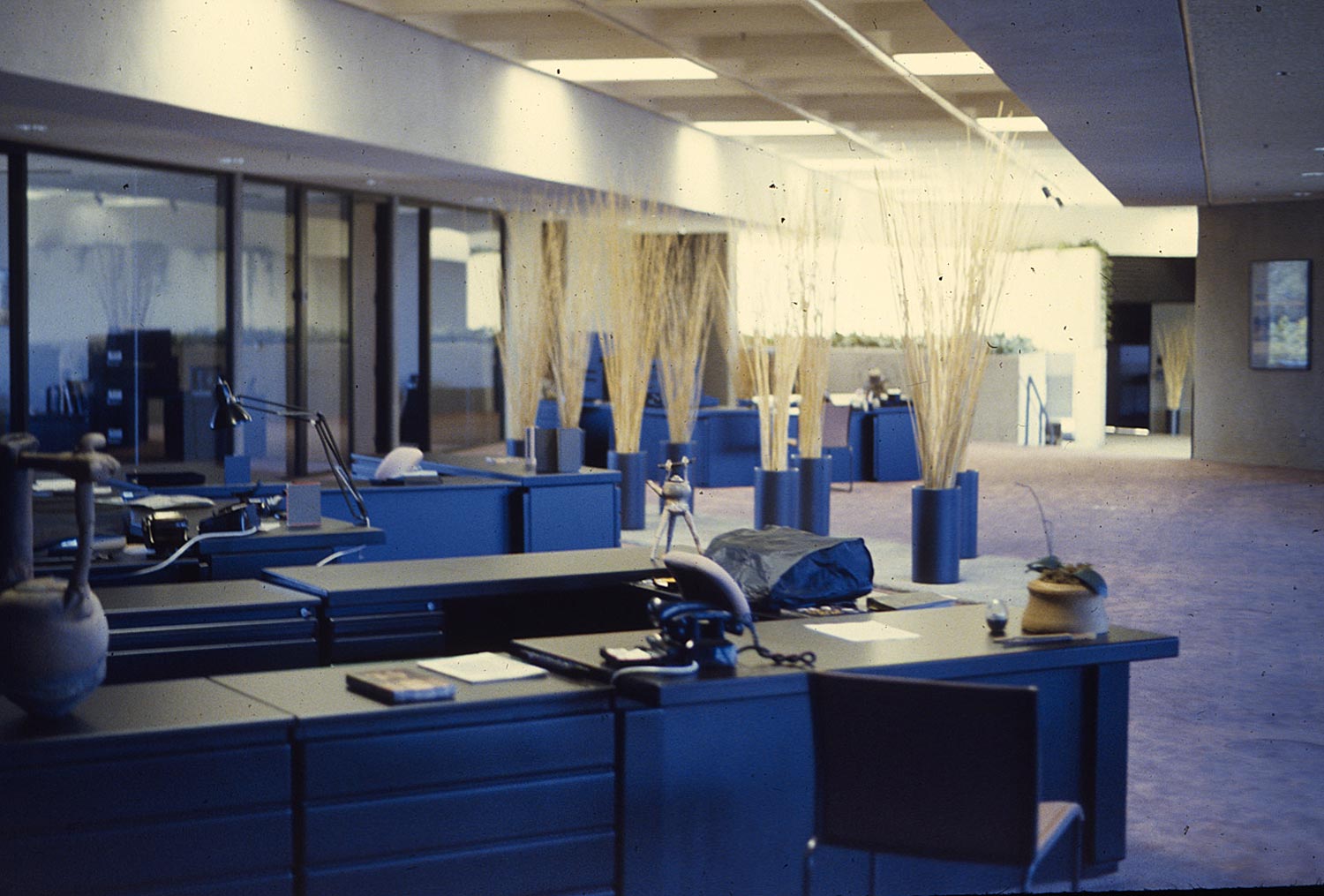
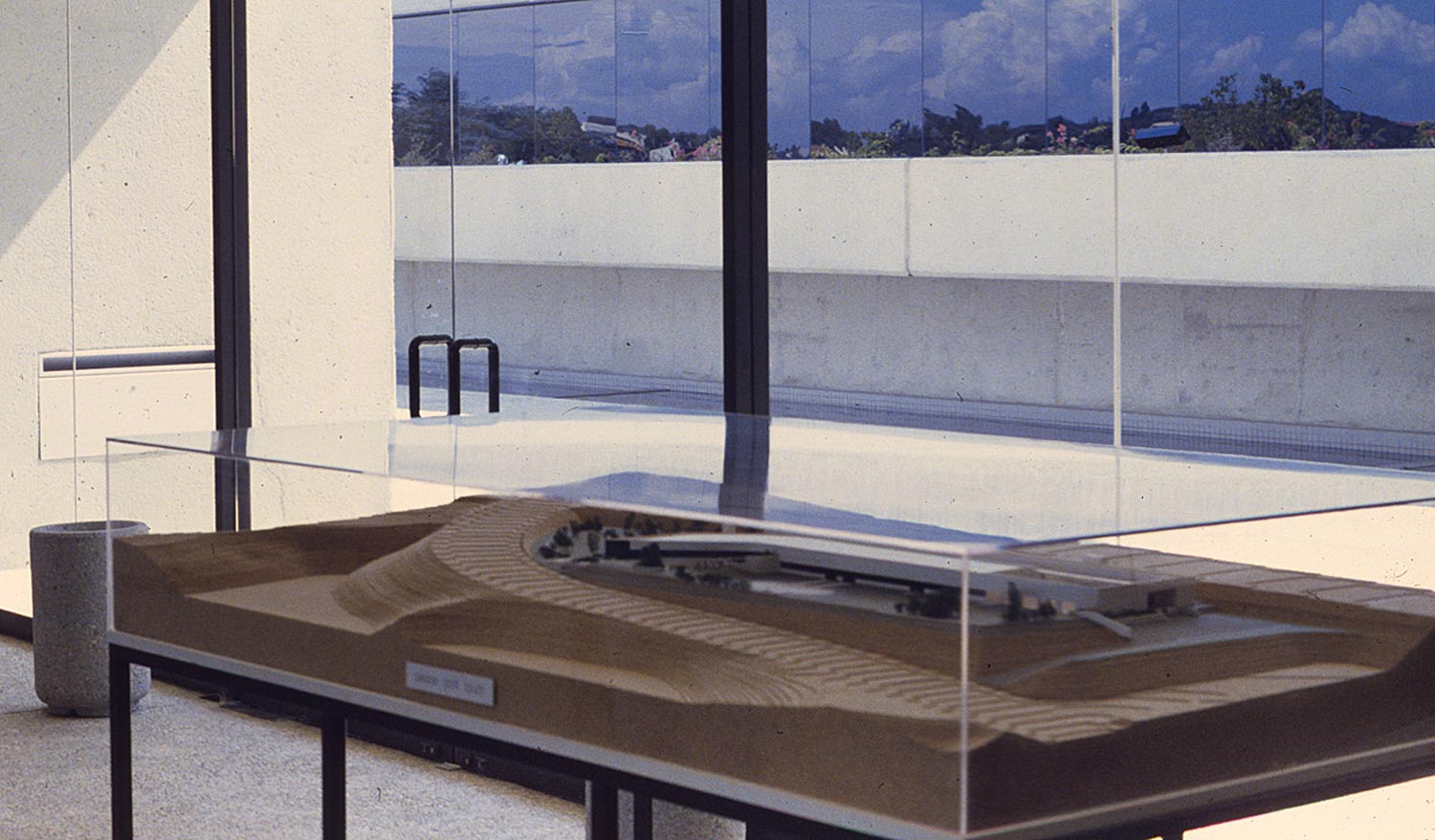
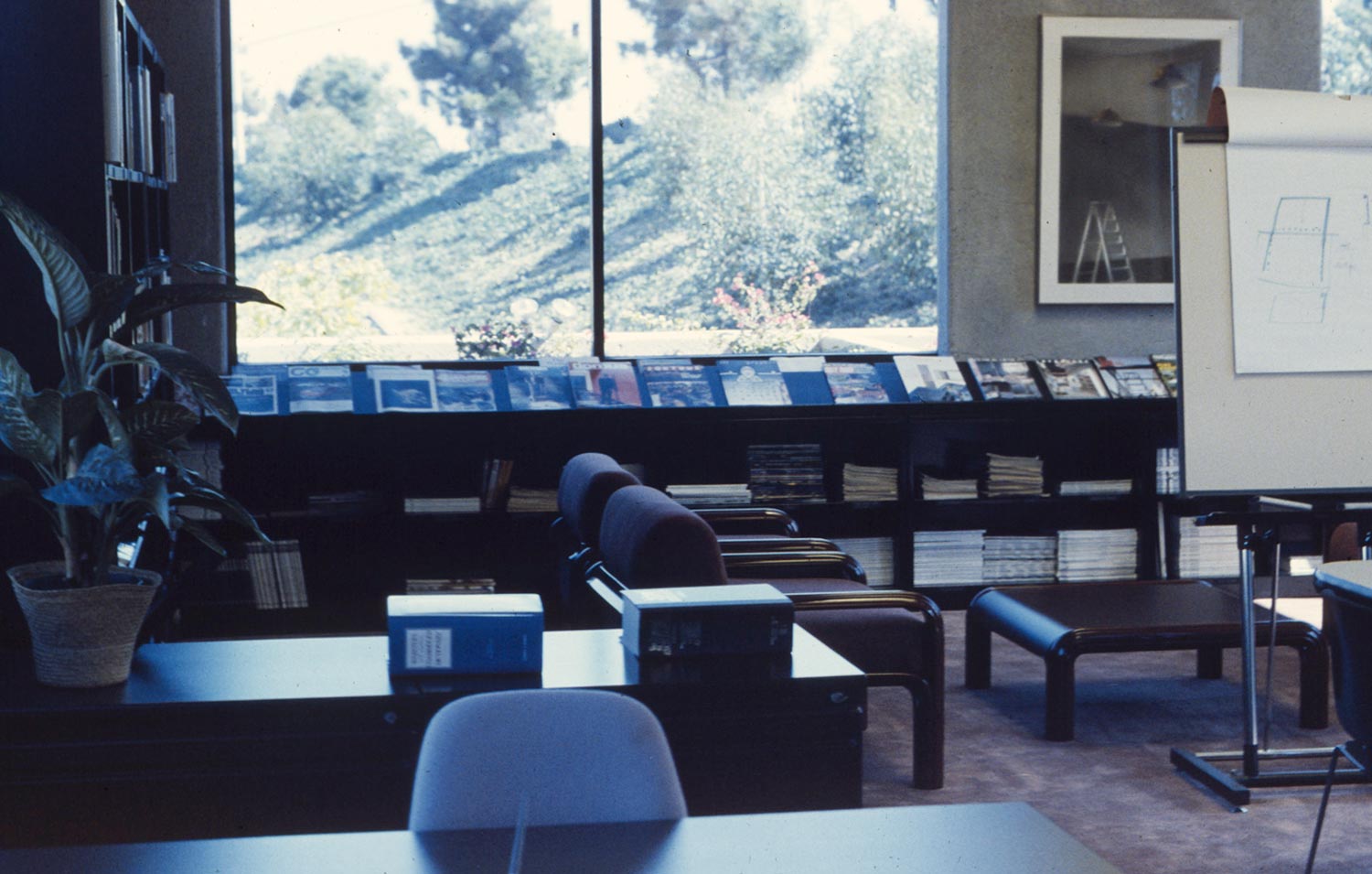
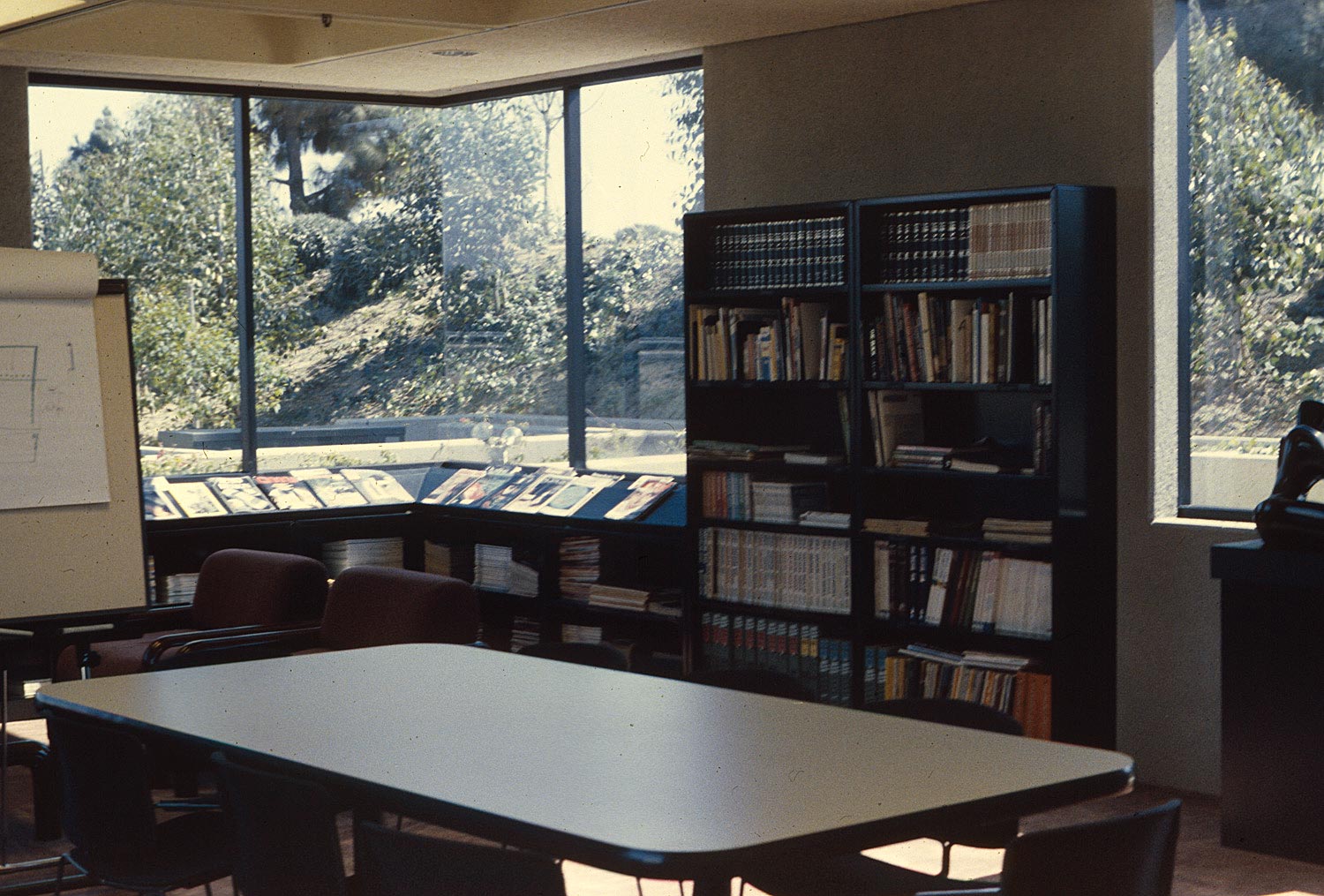
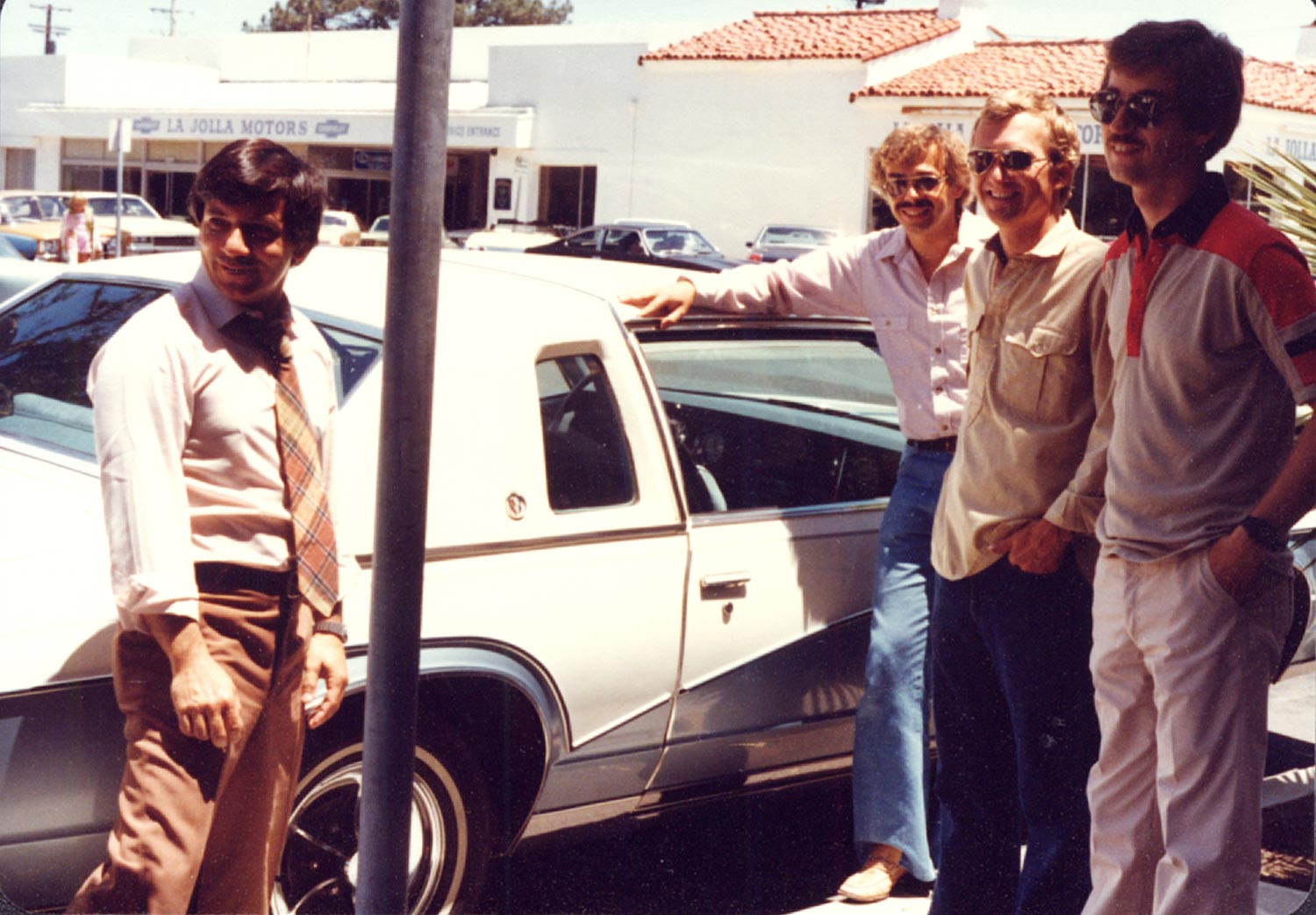
Interesting times.